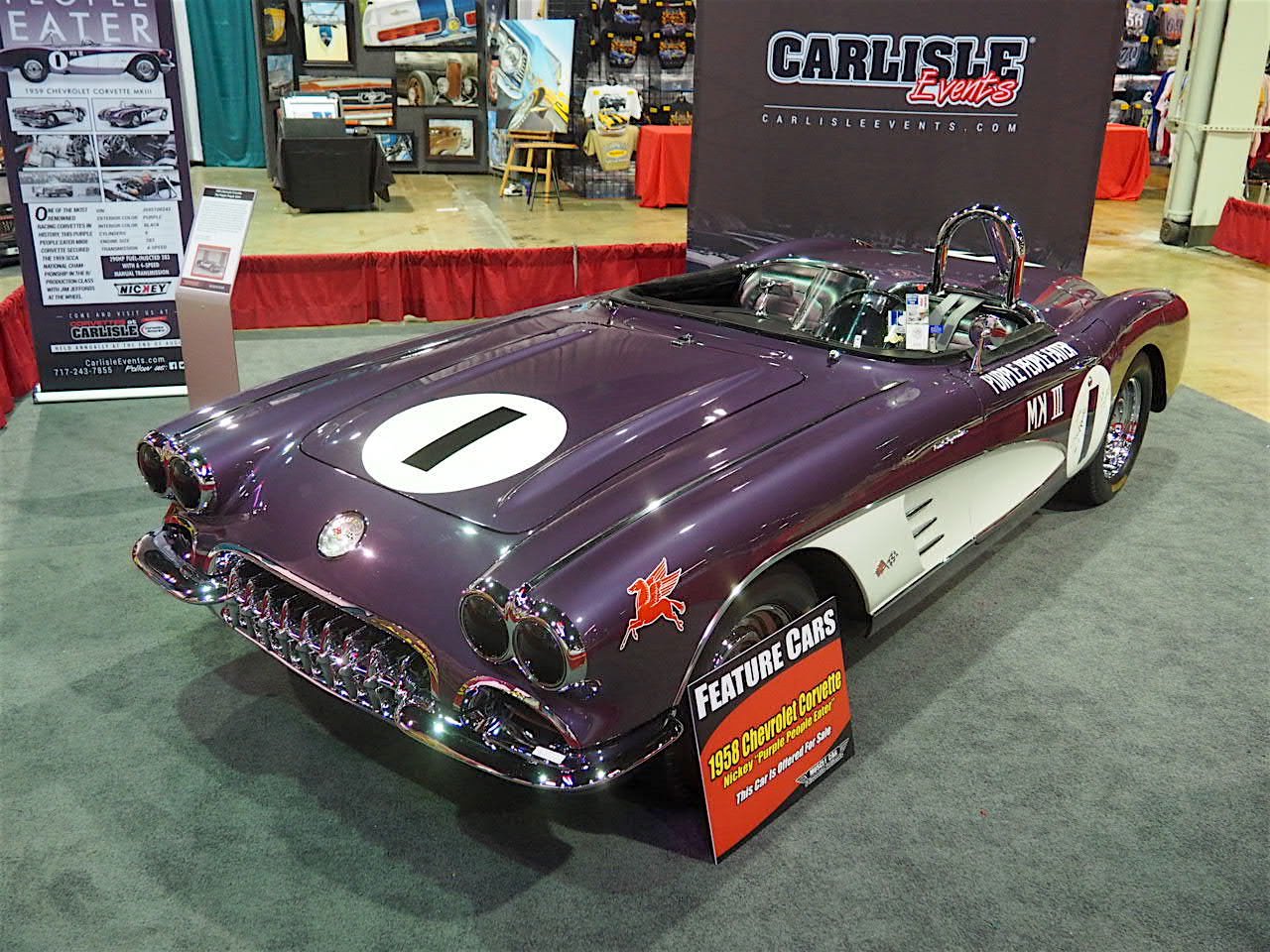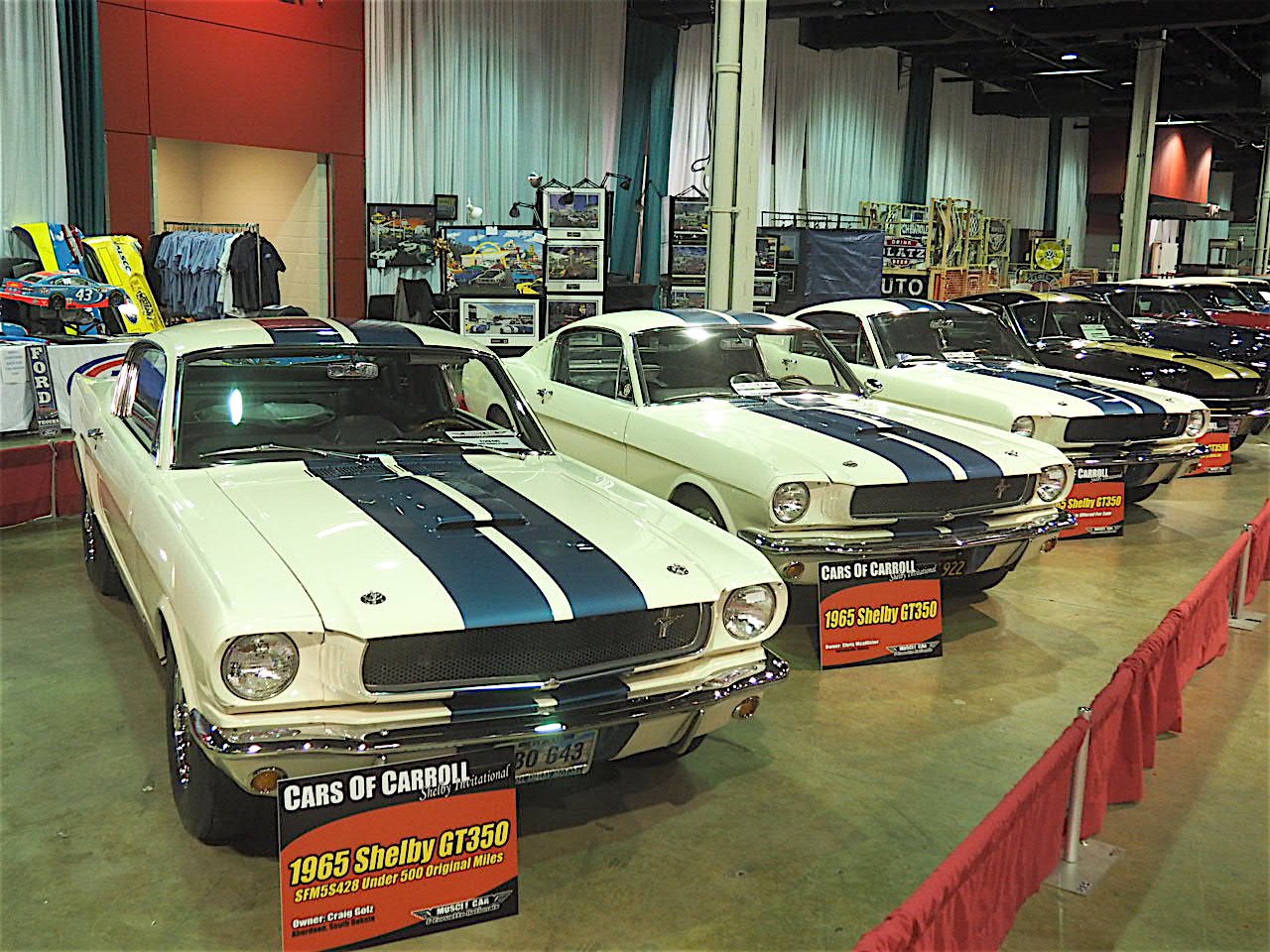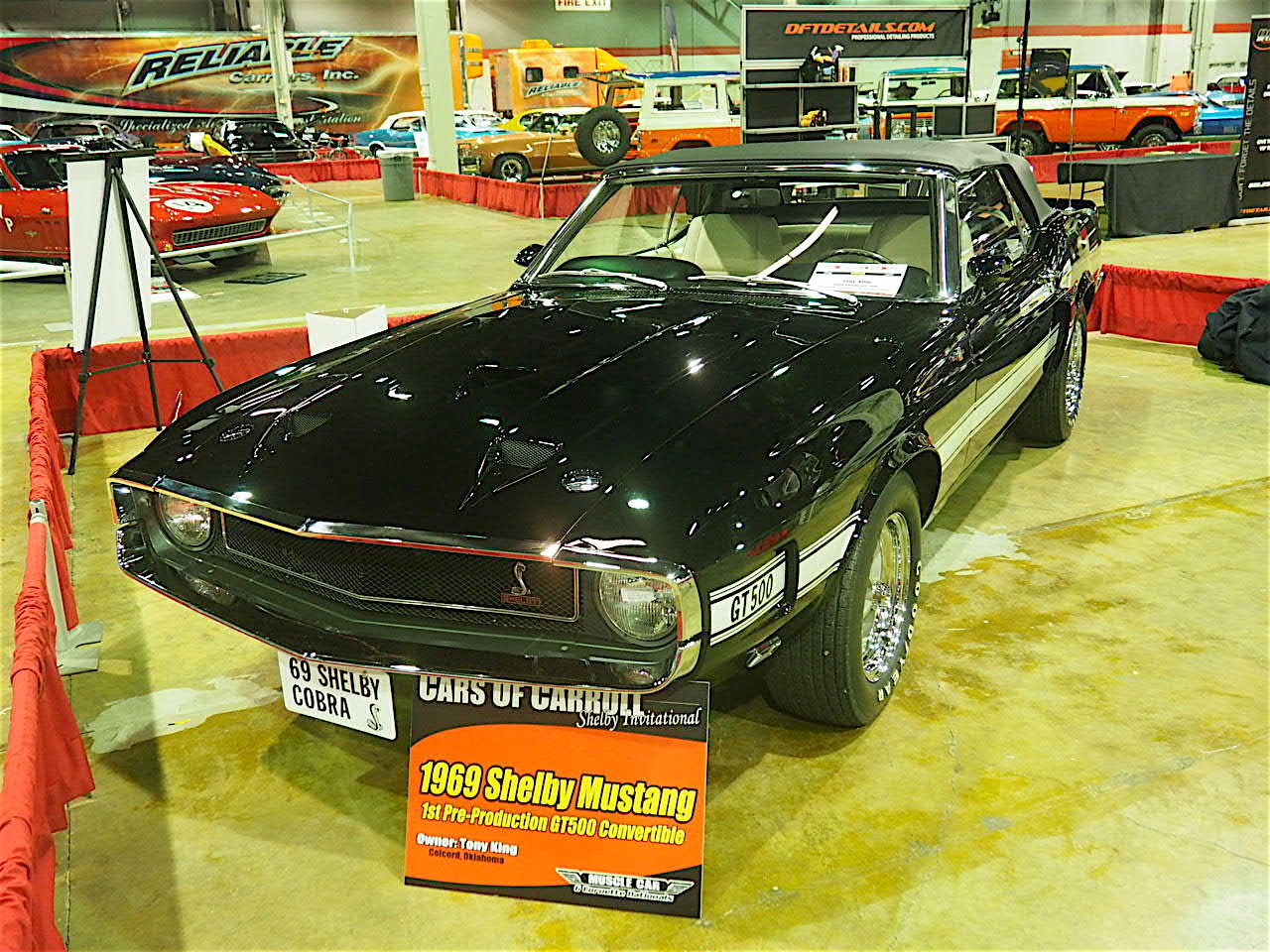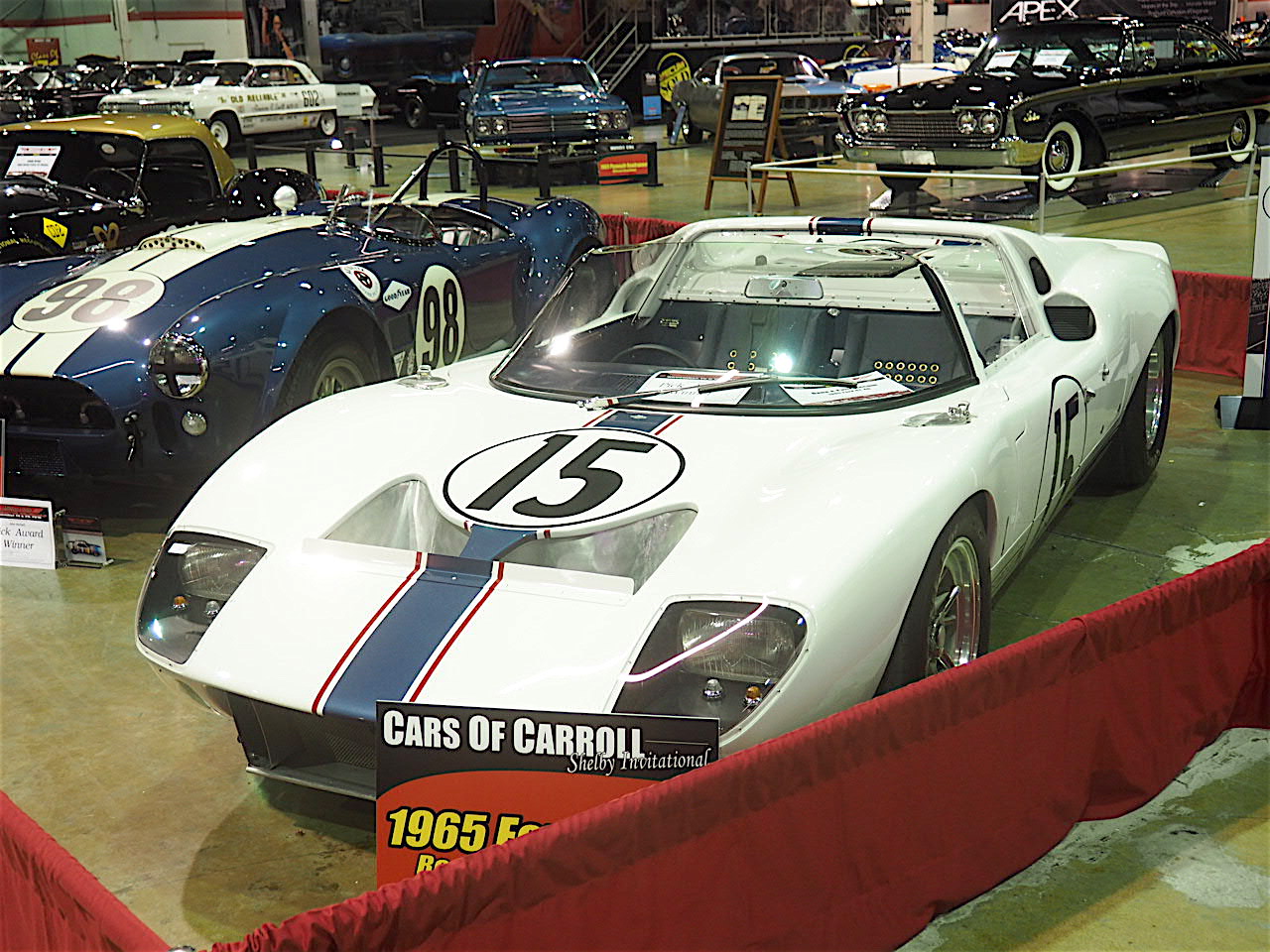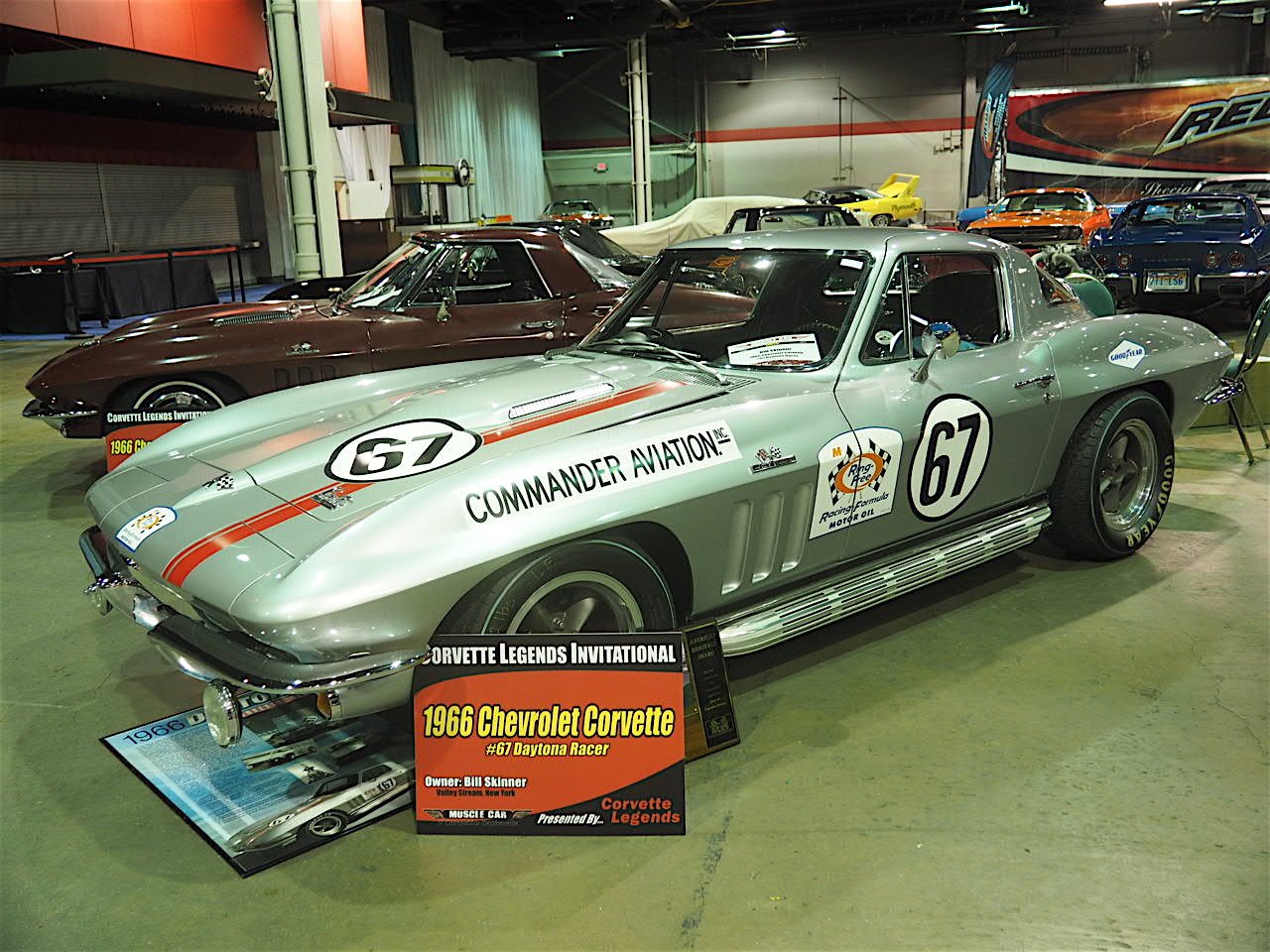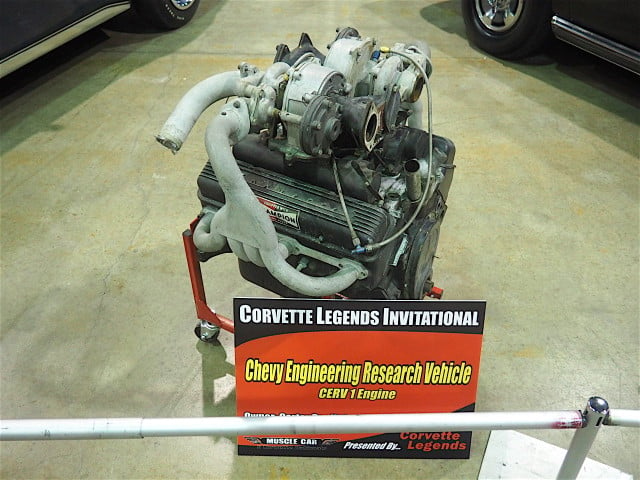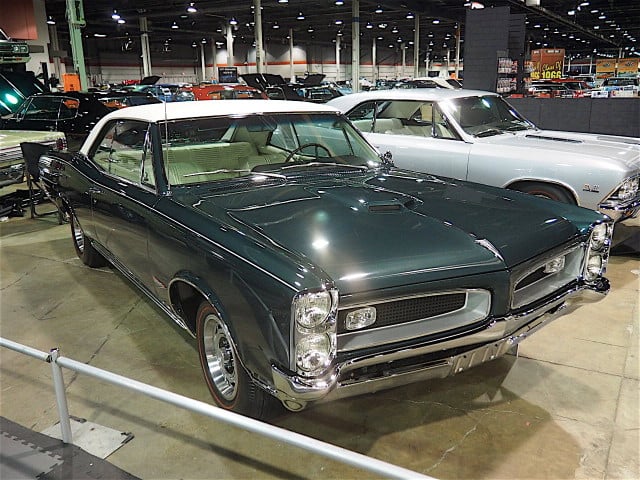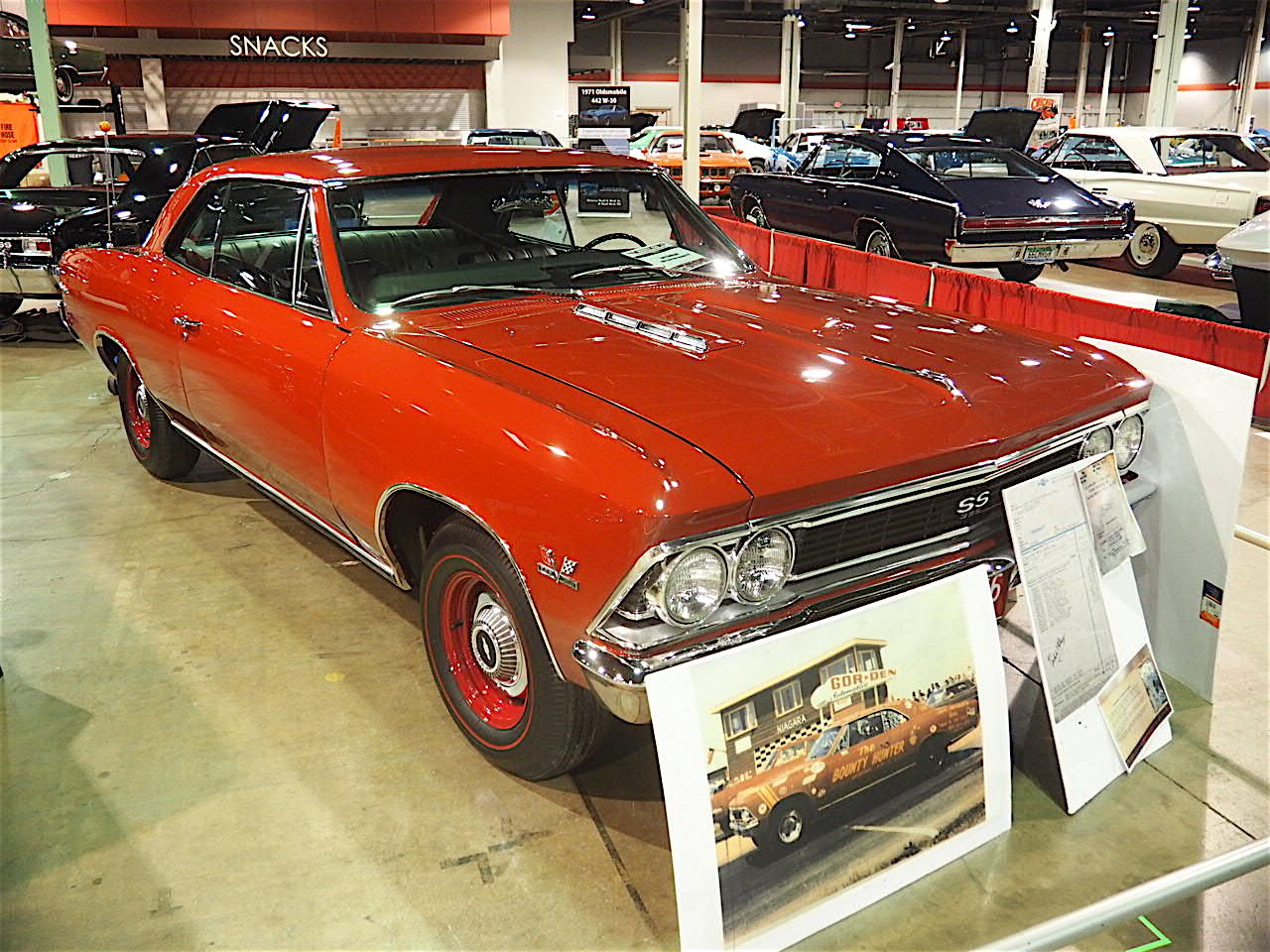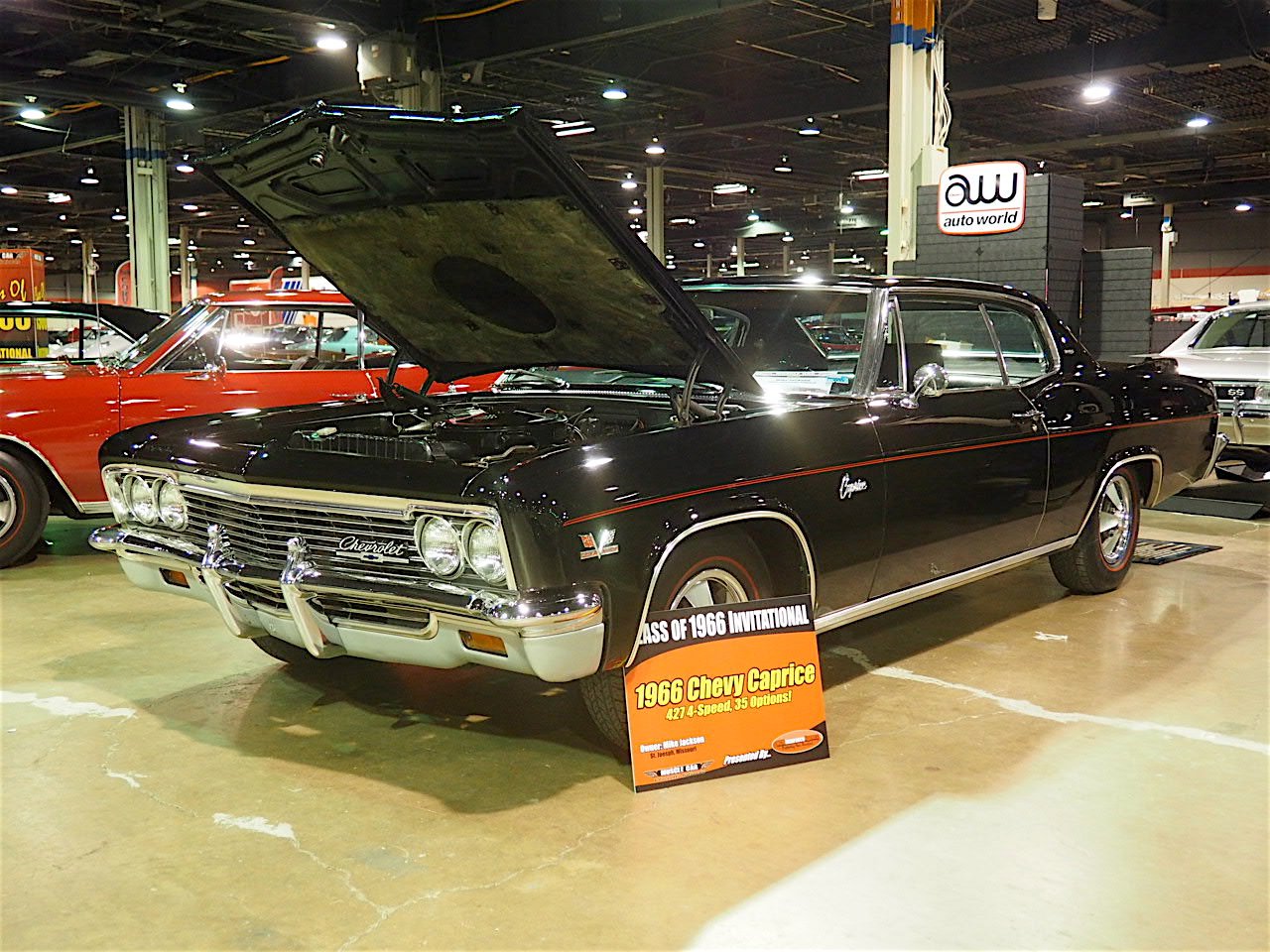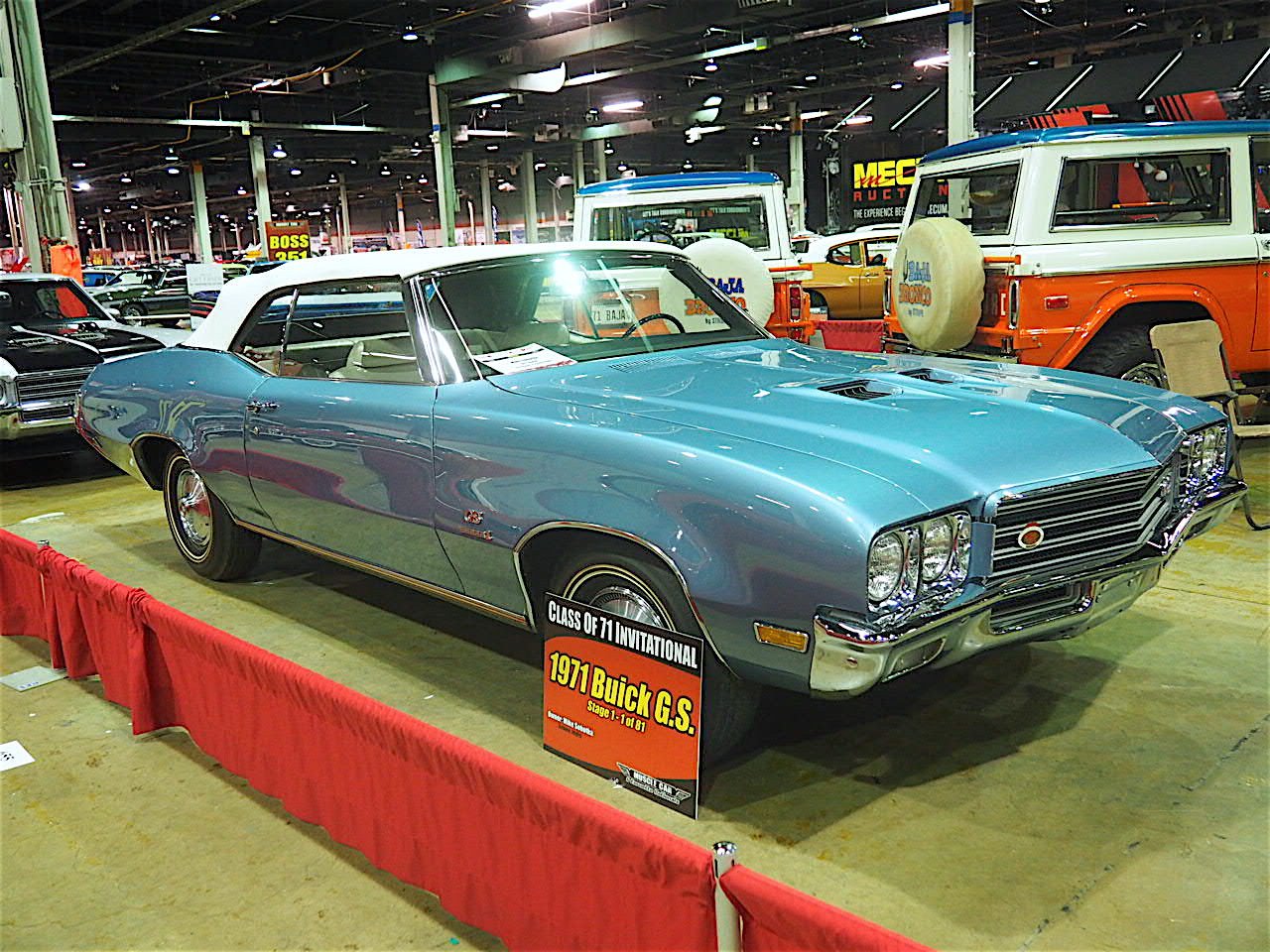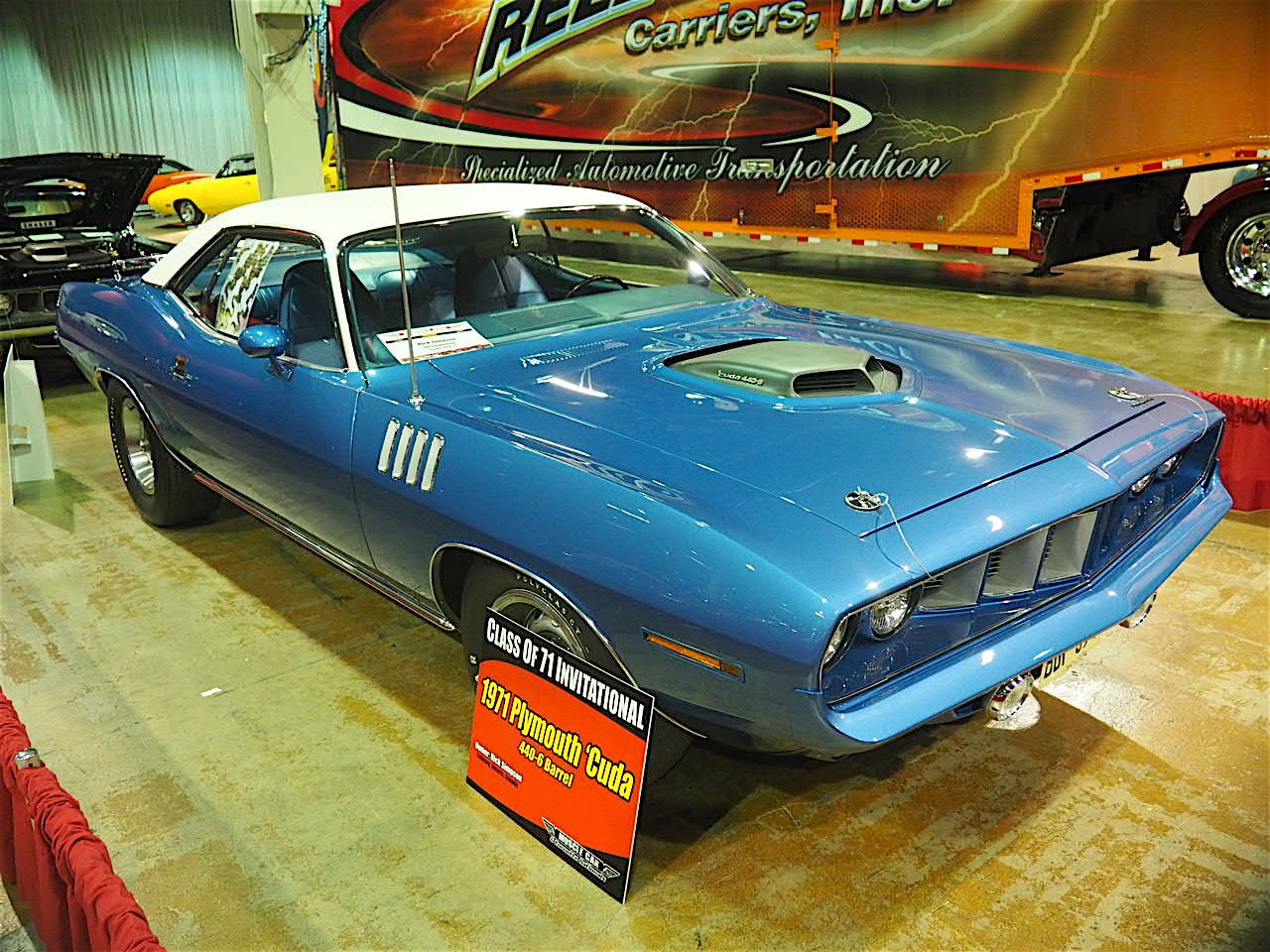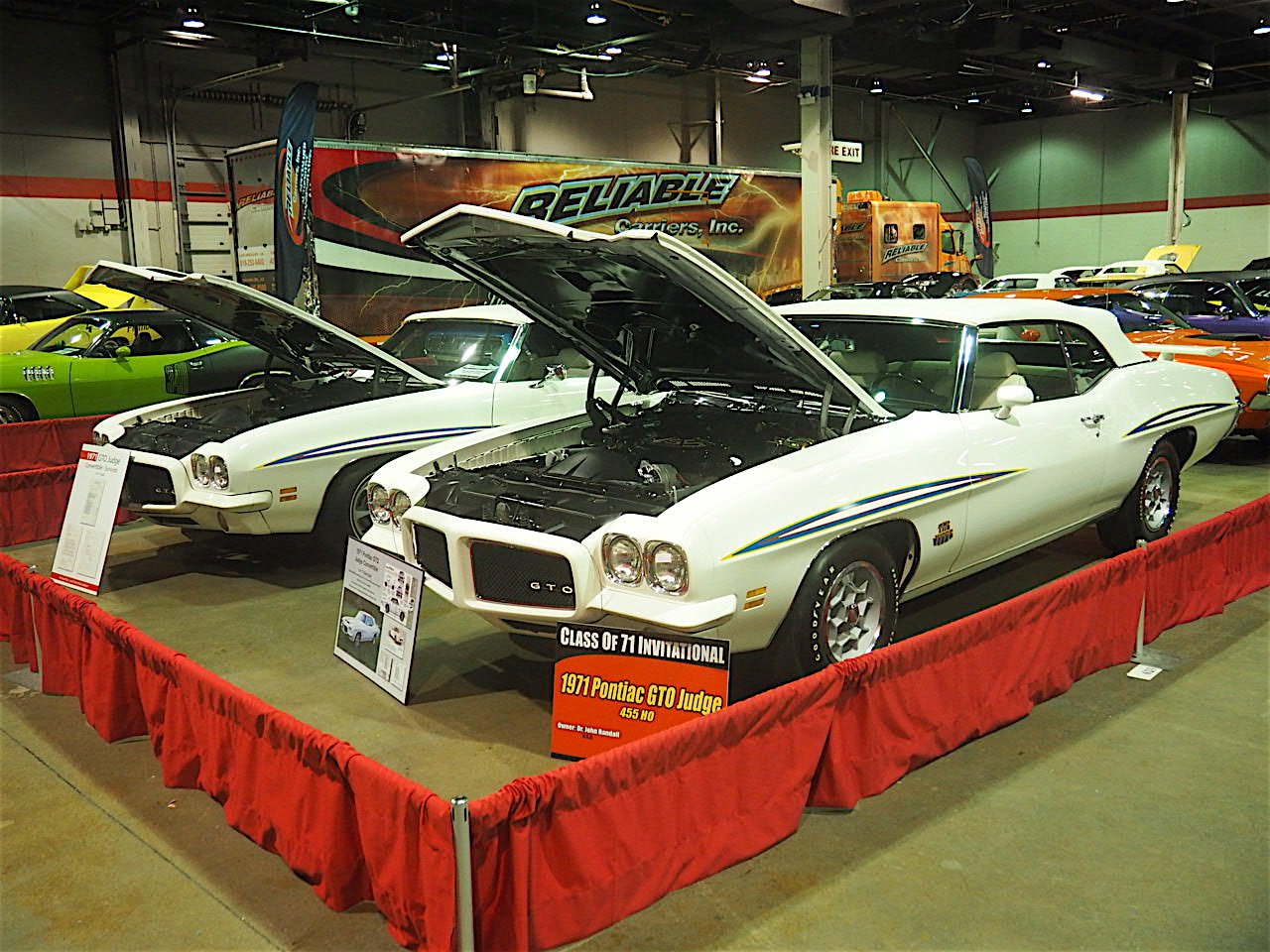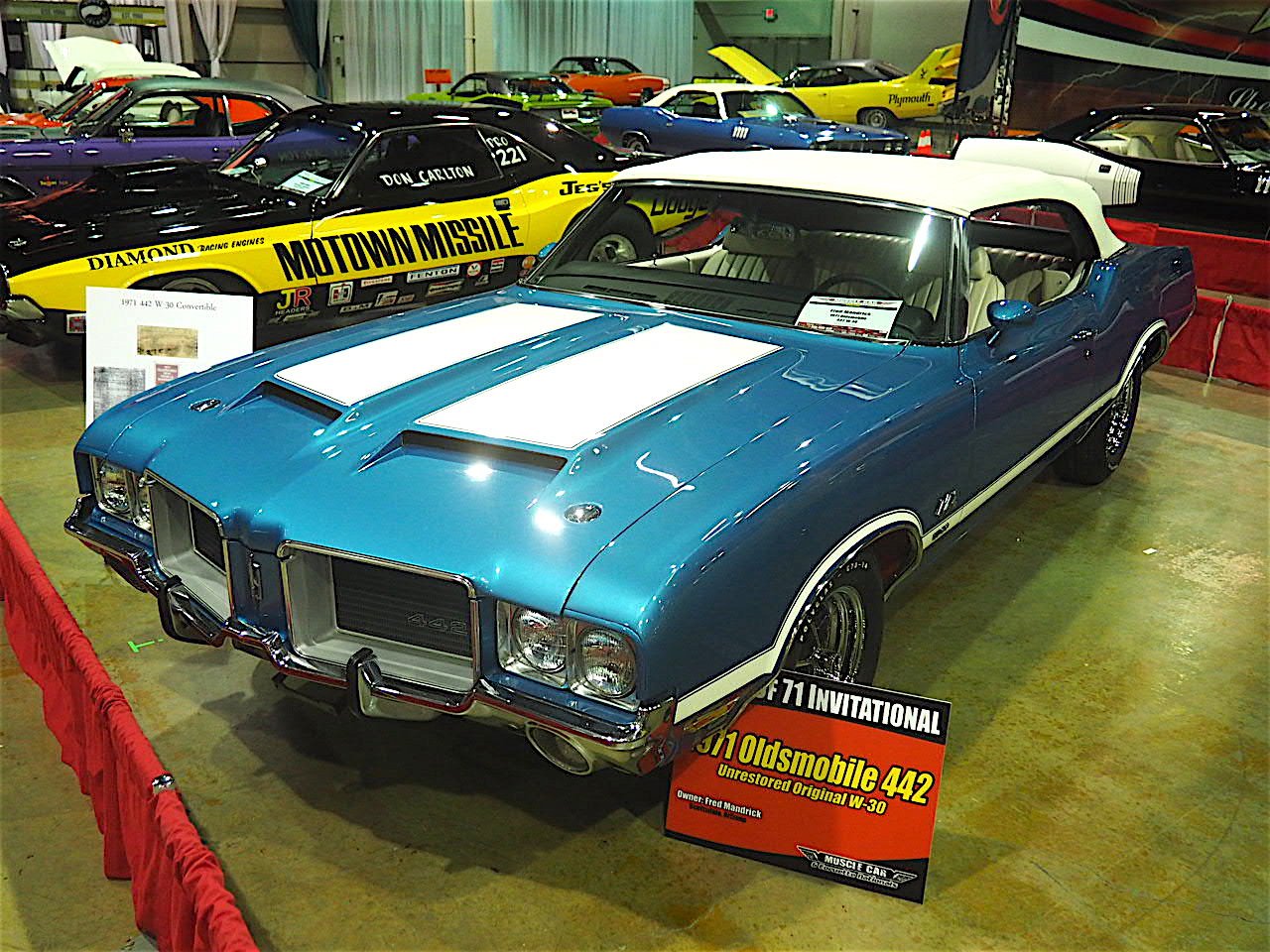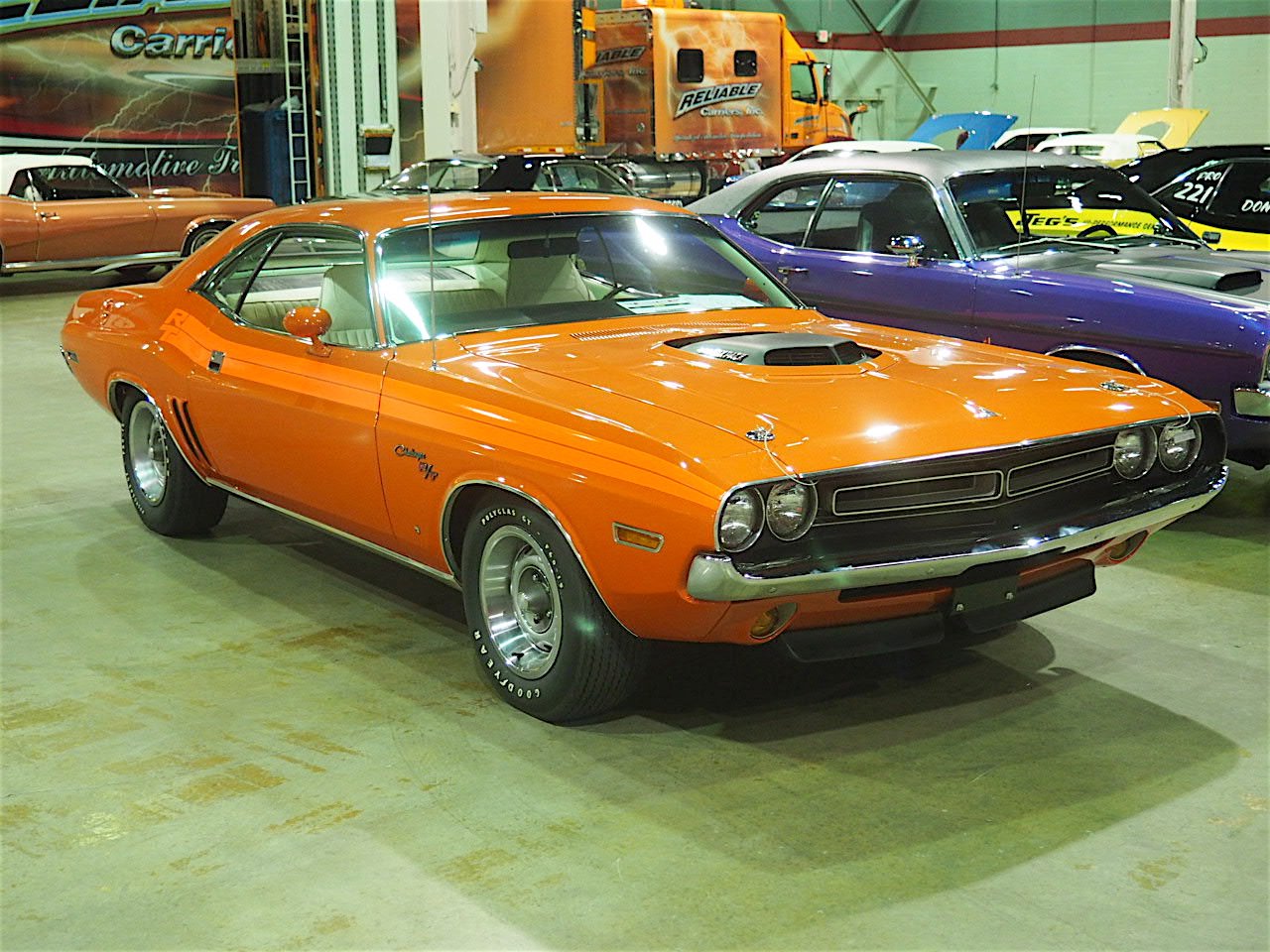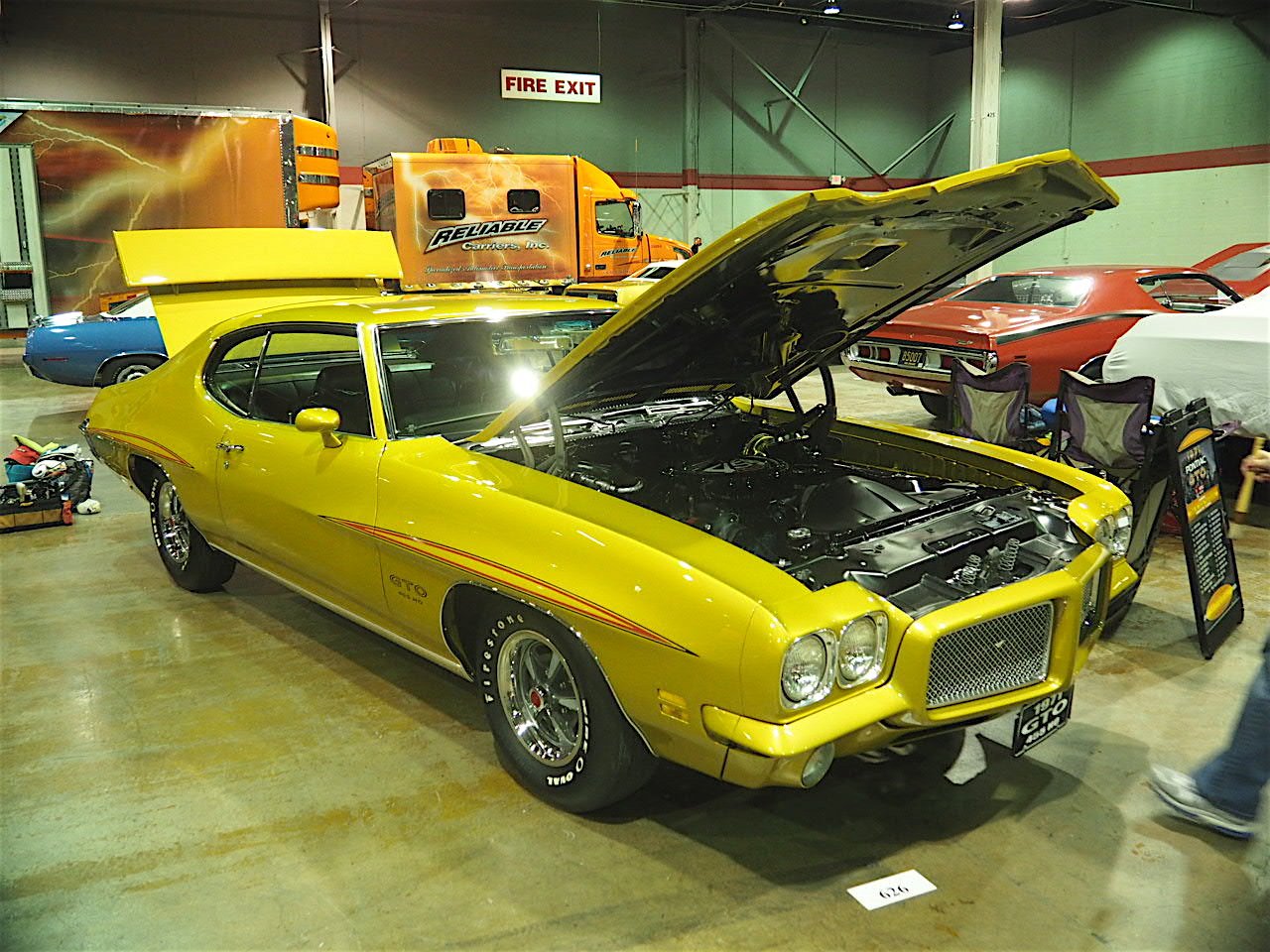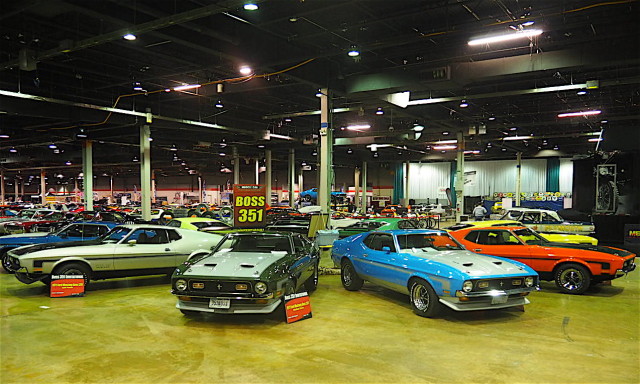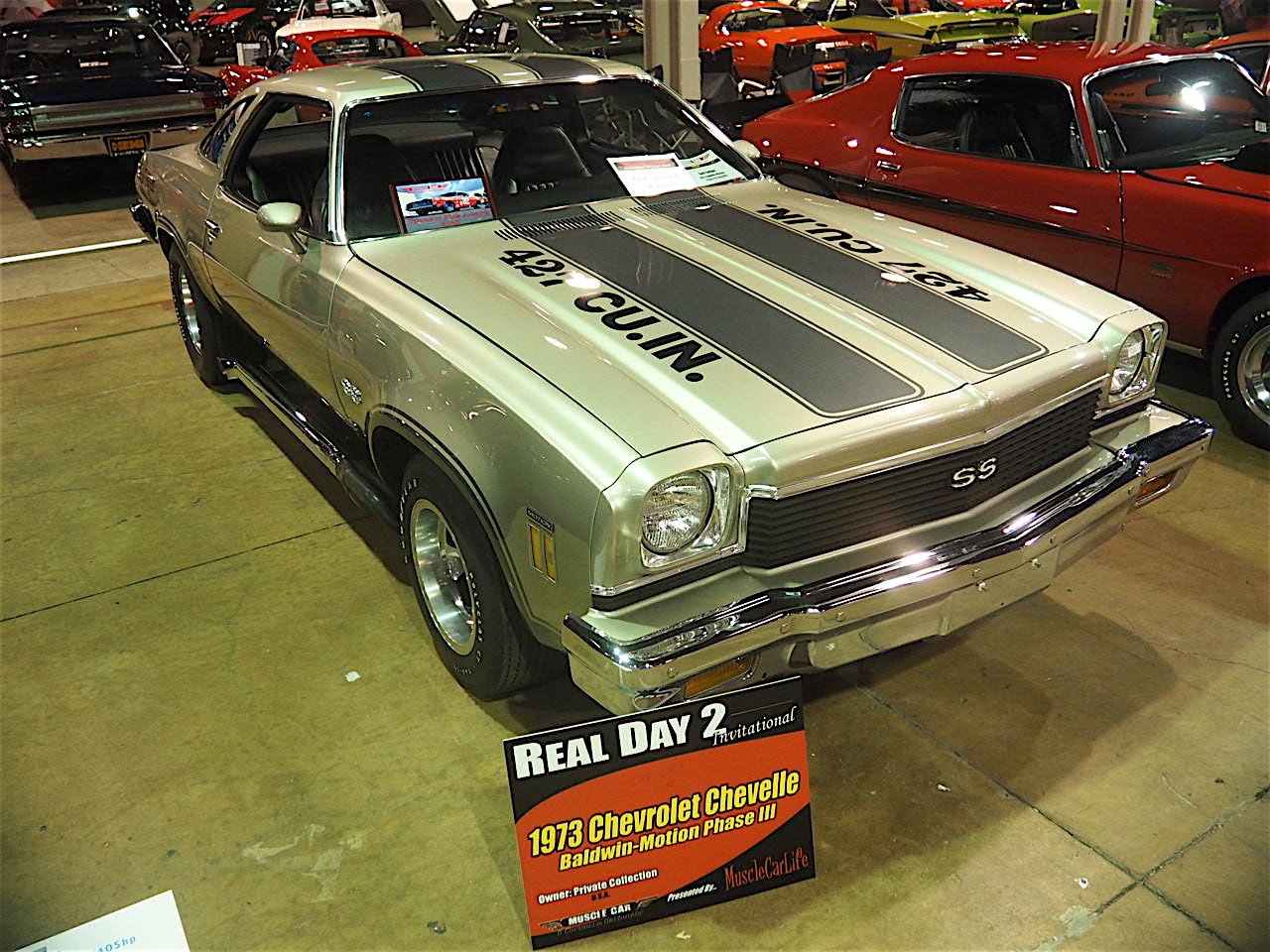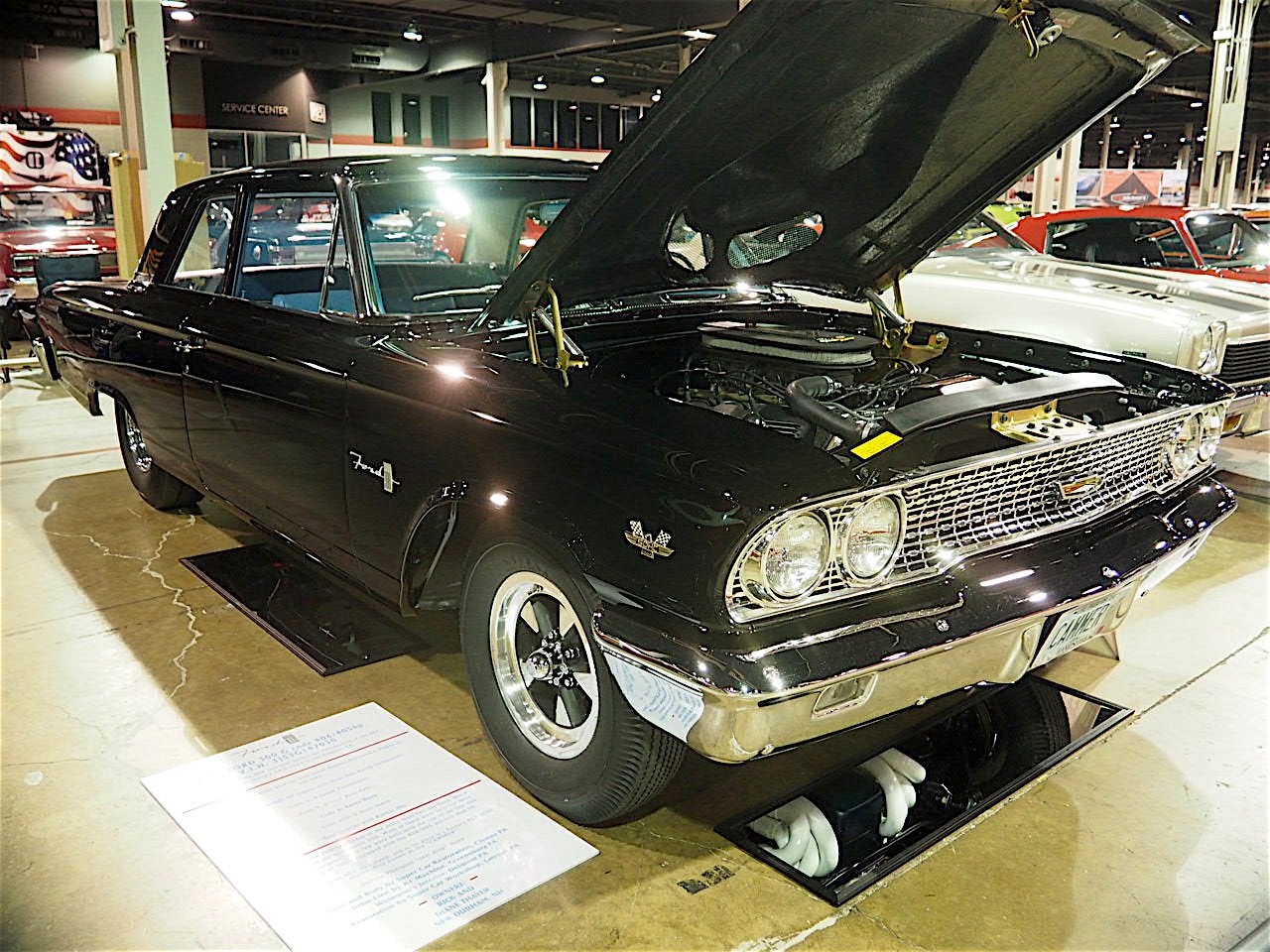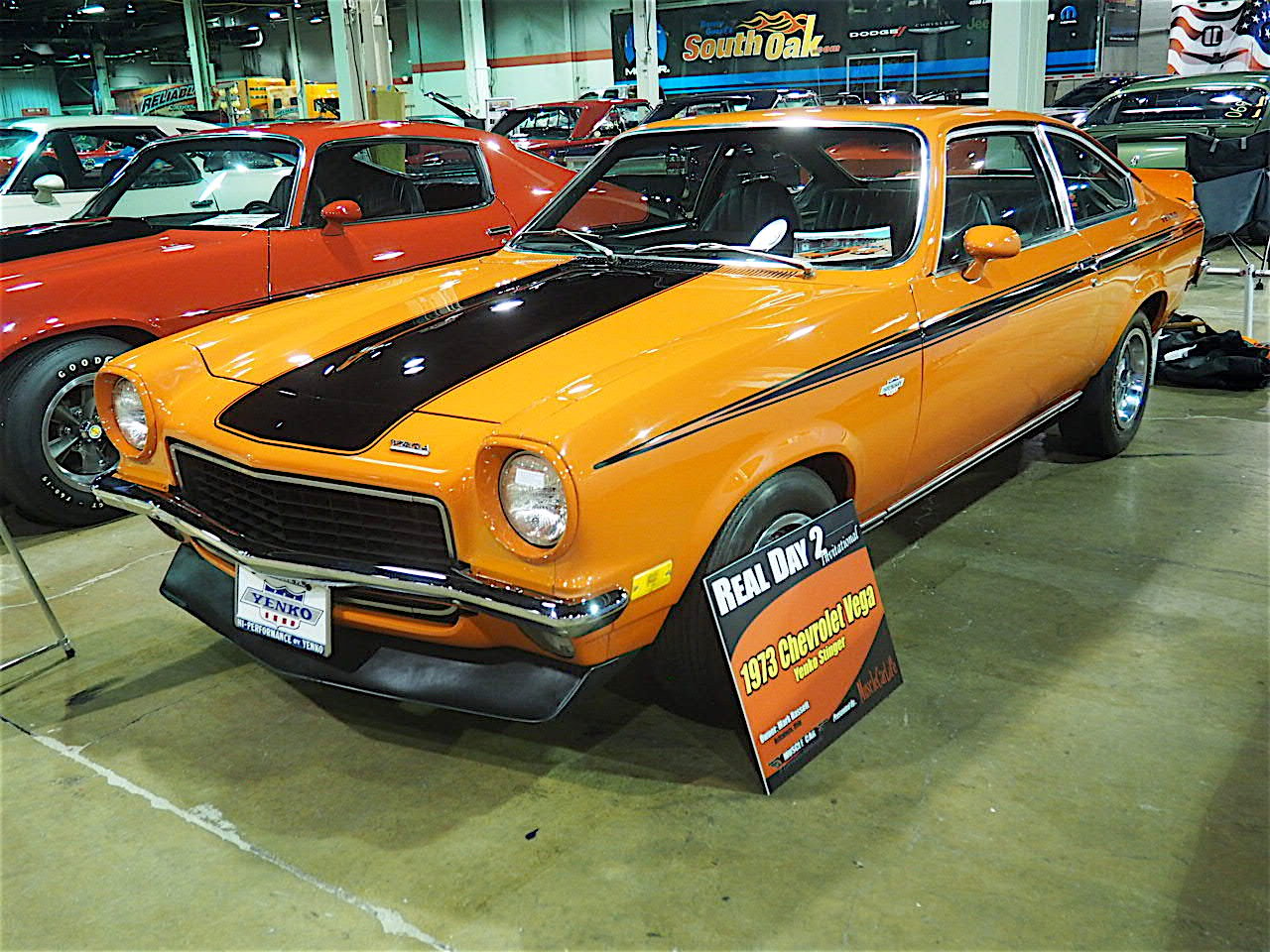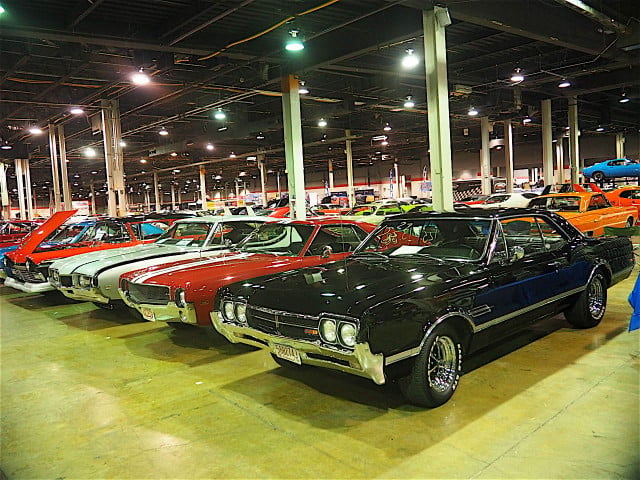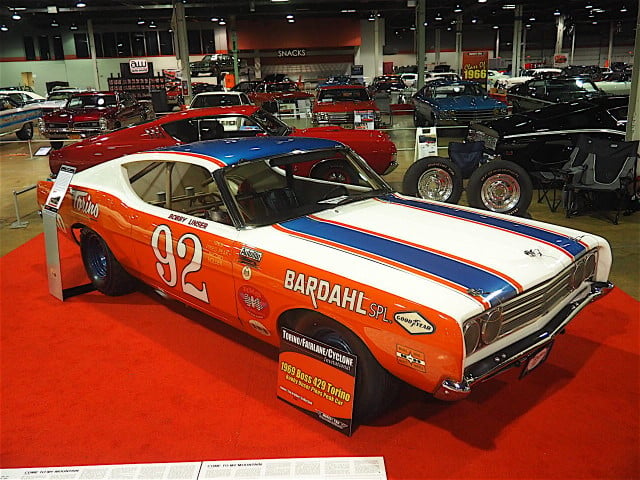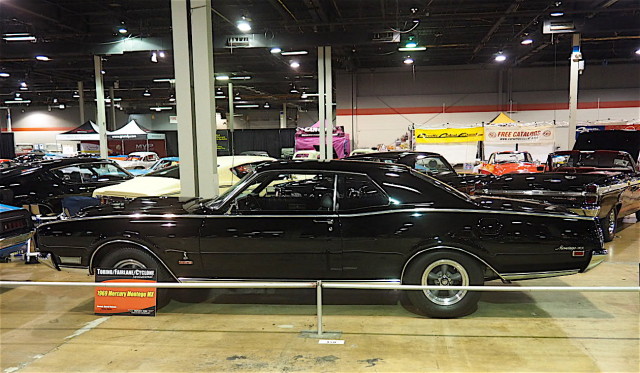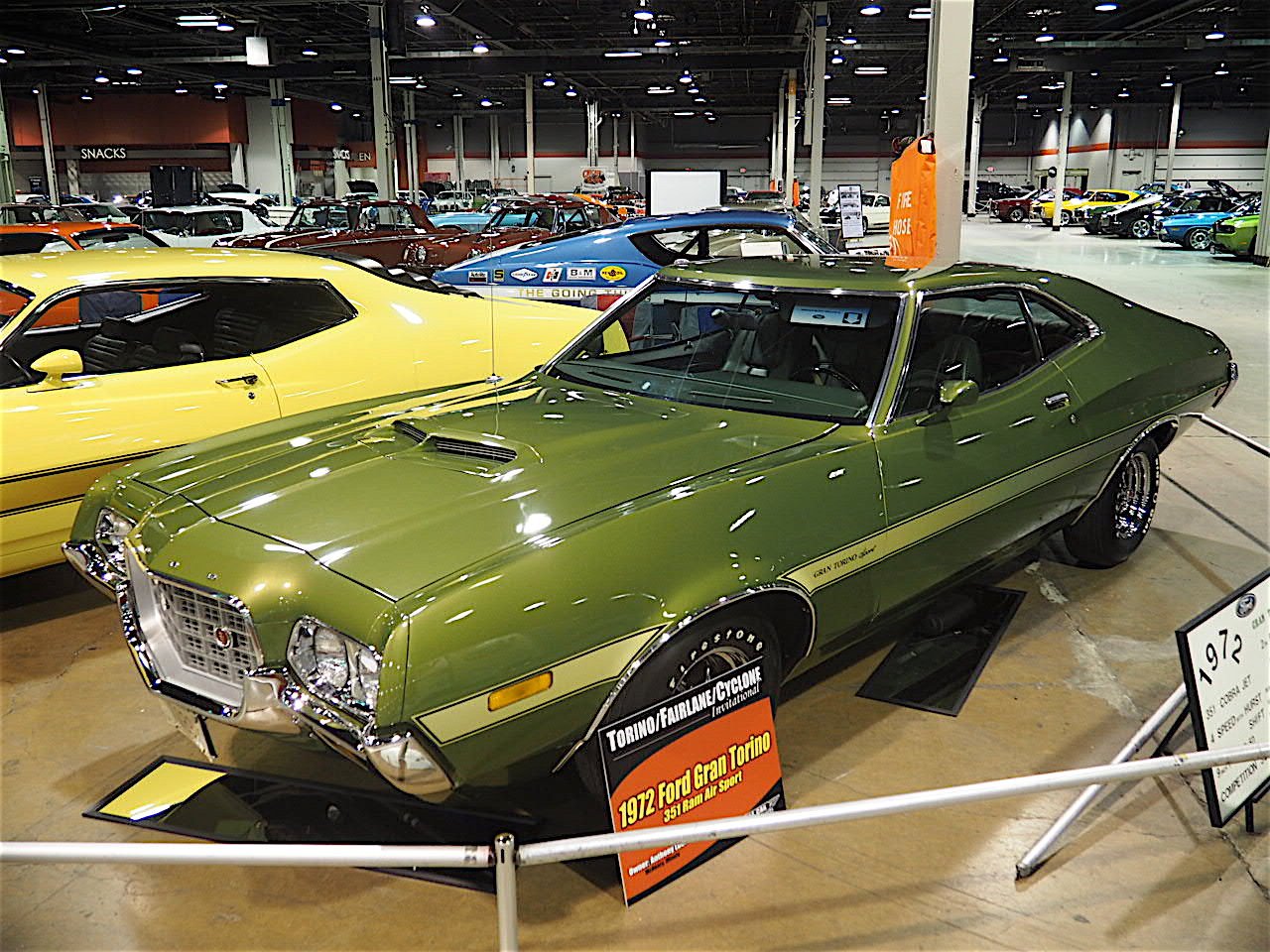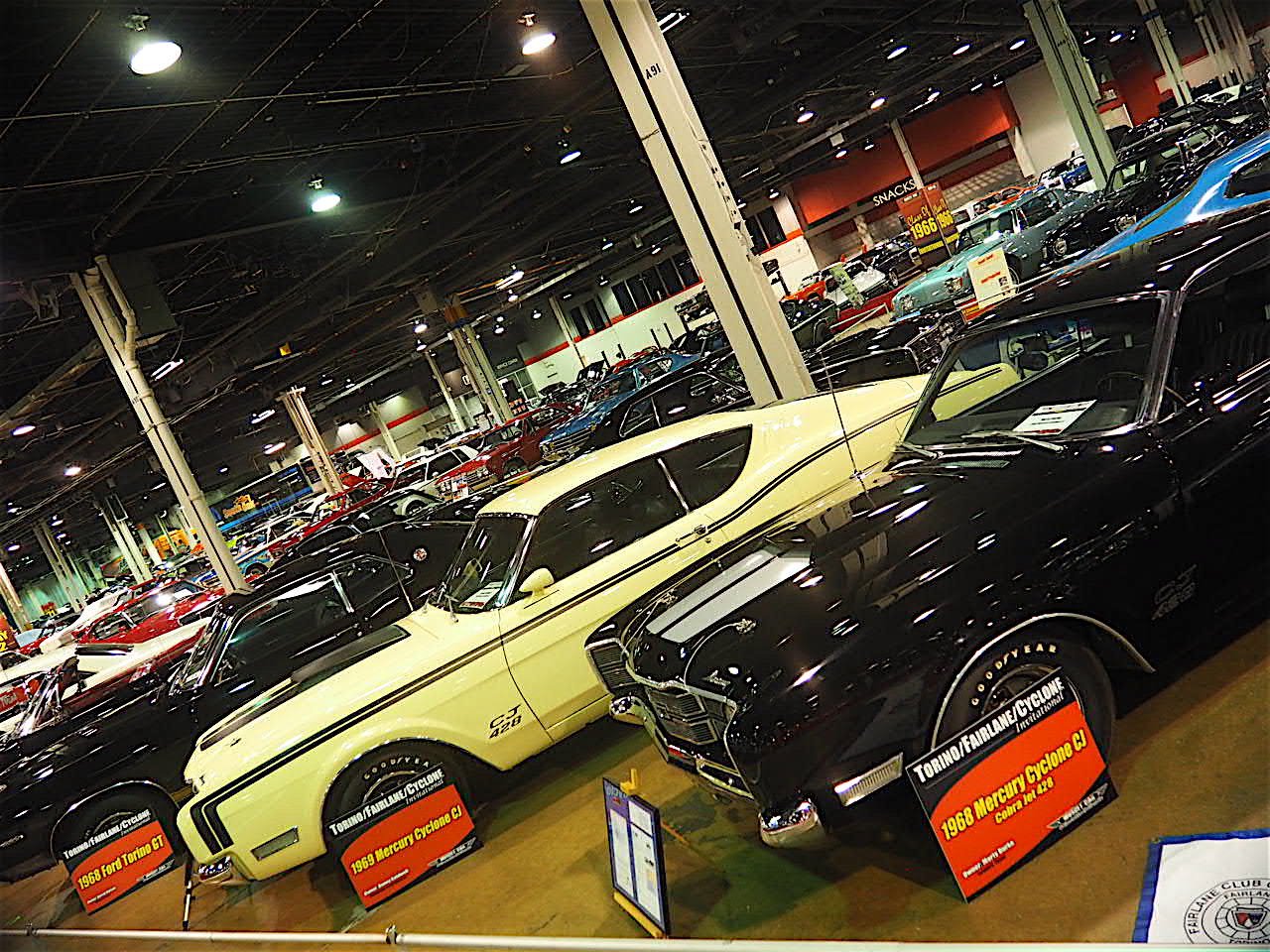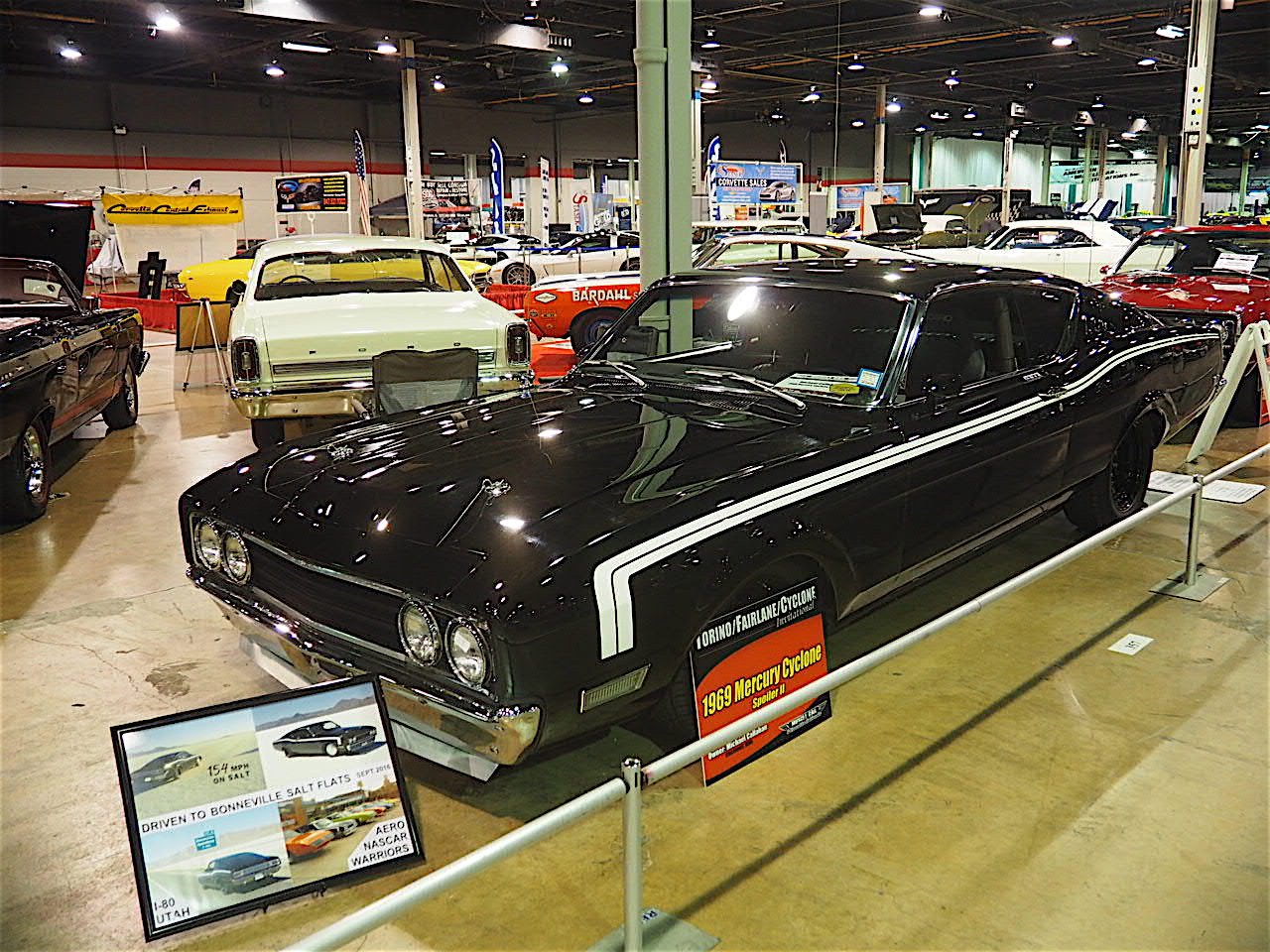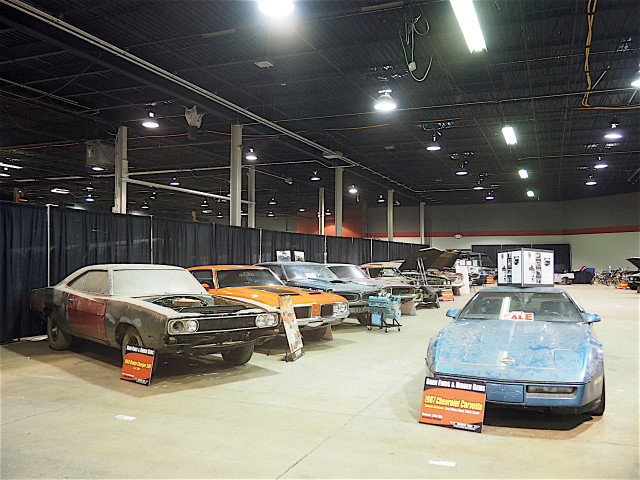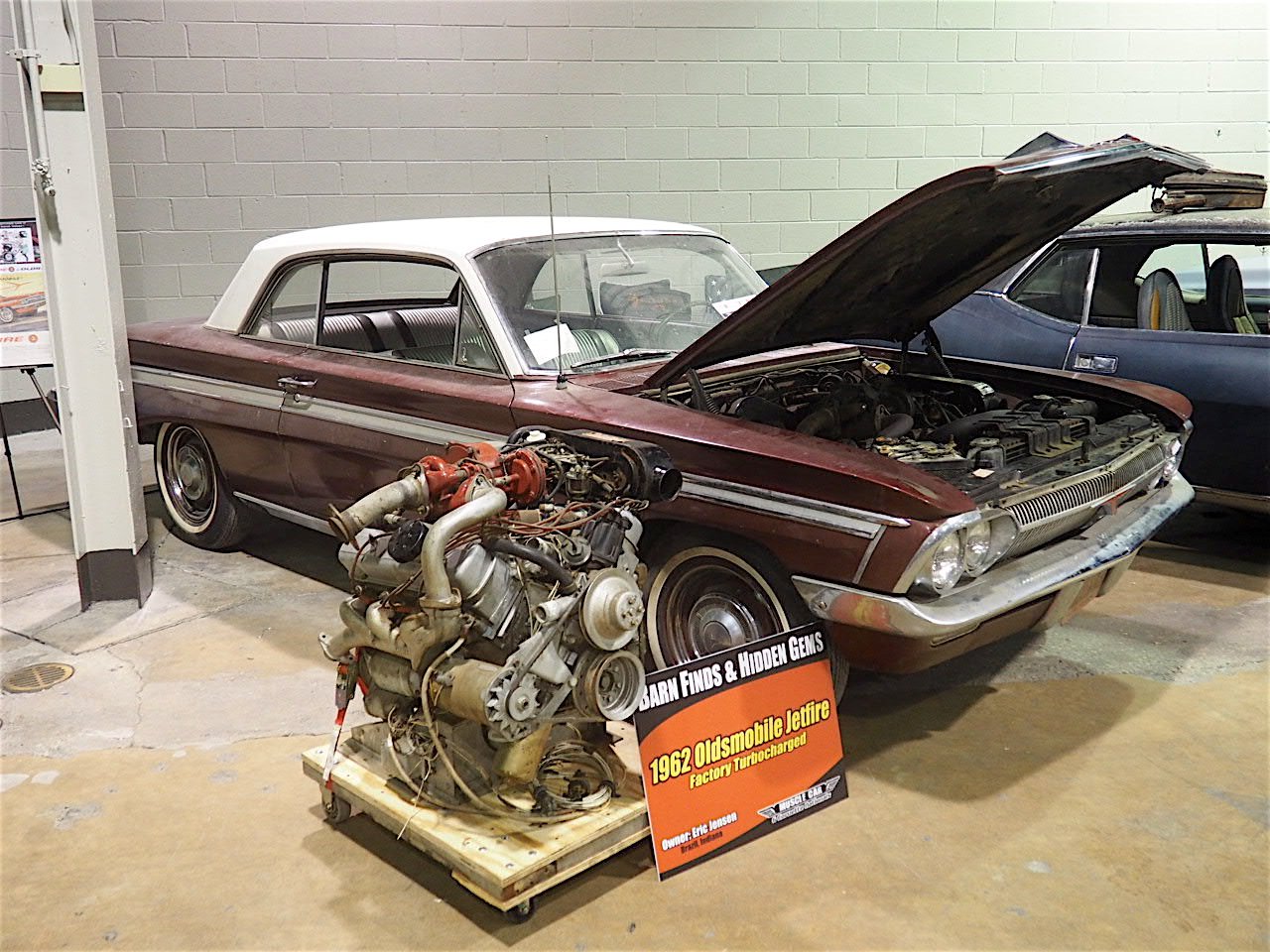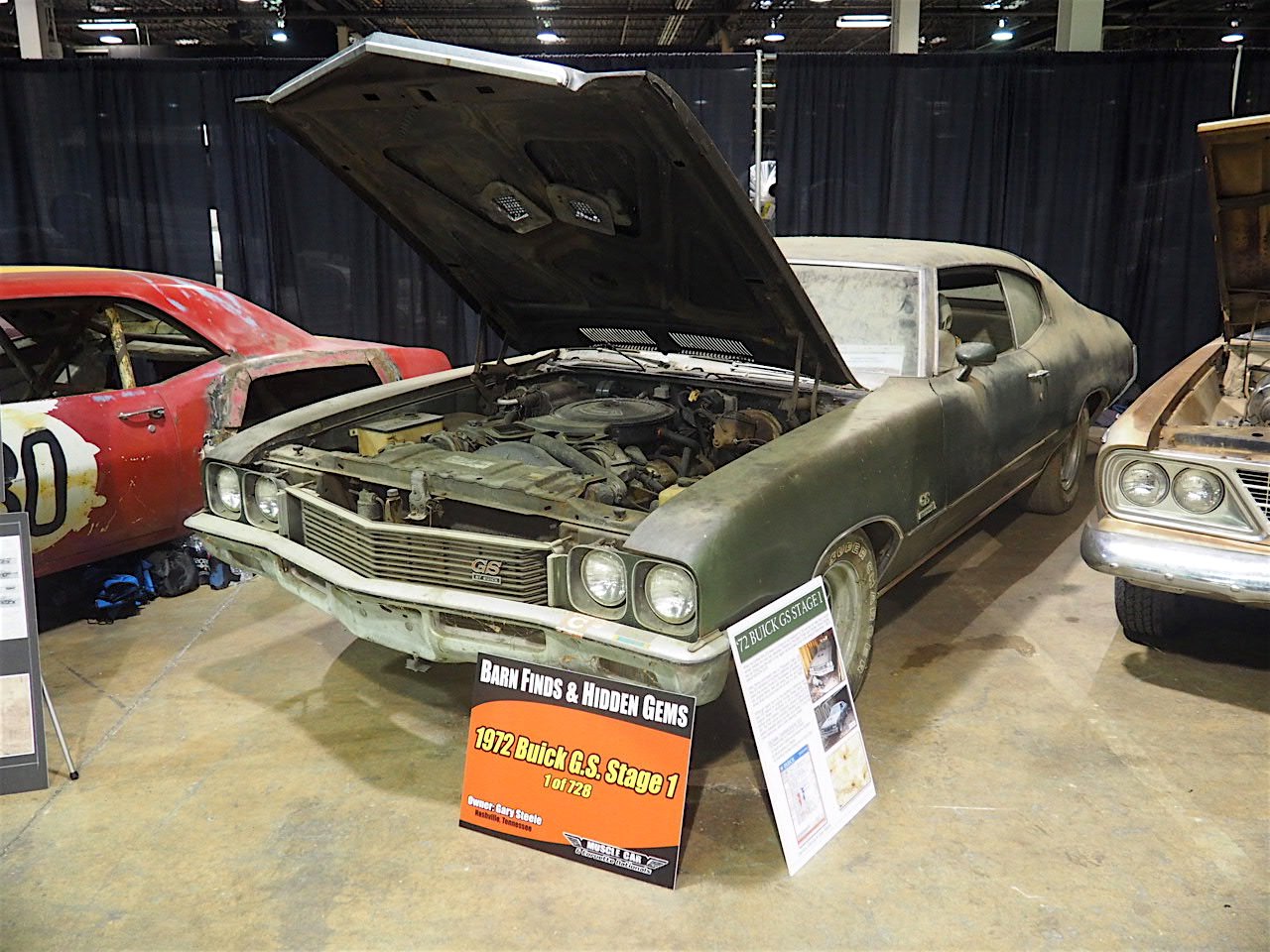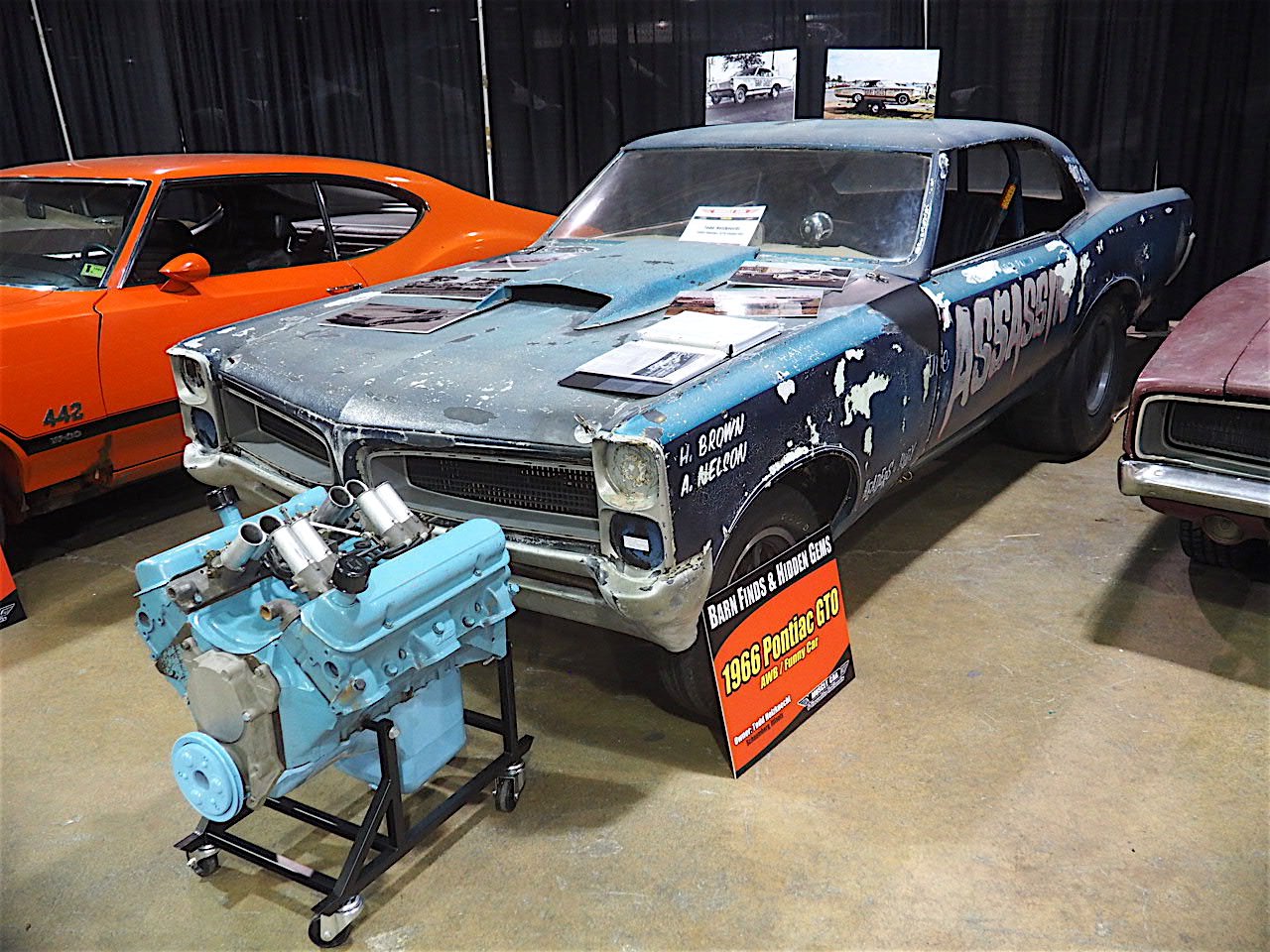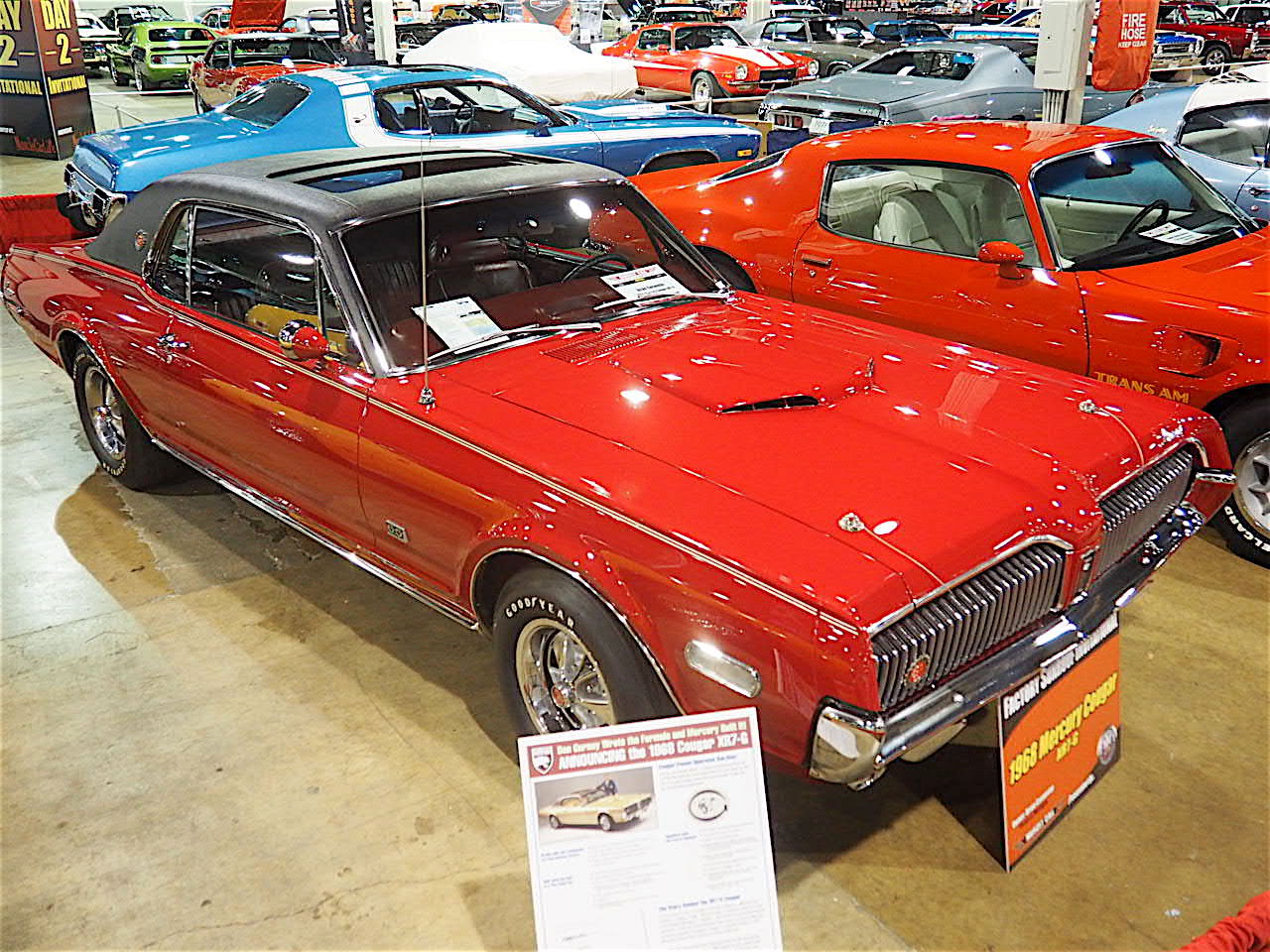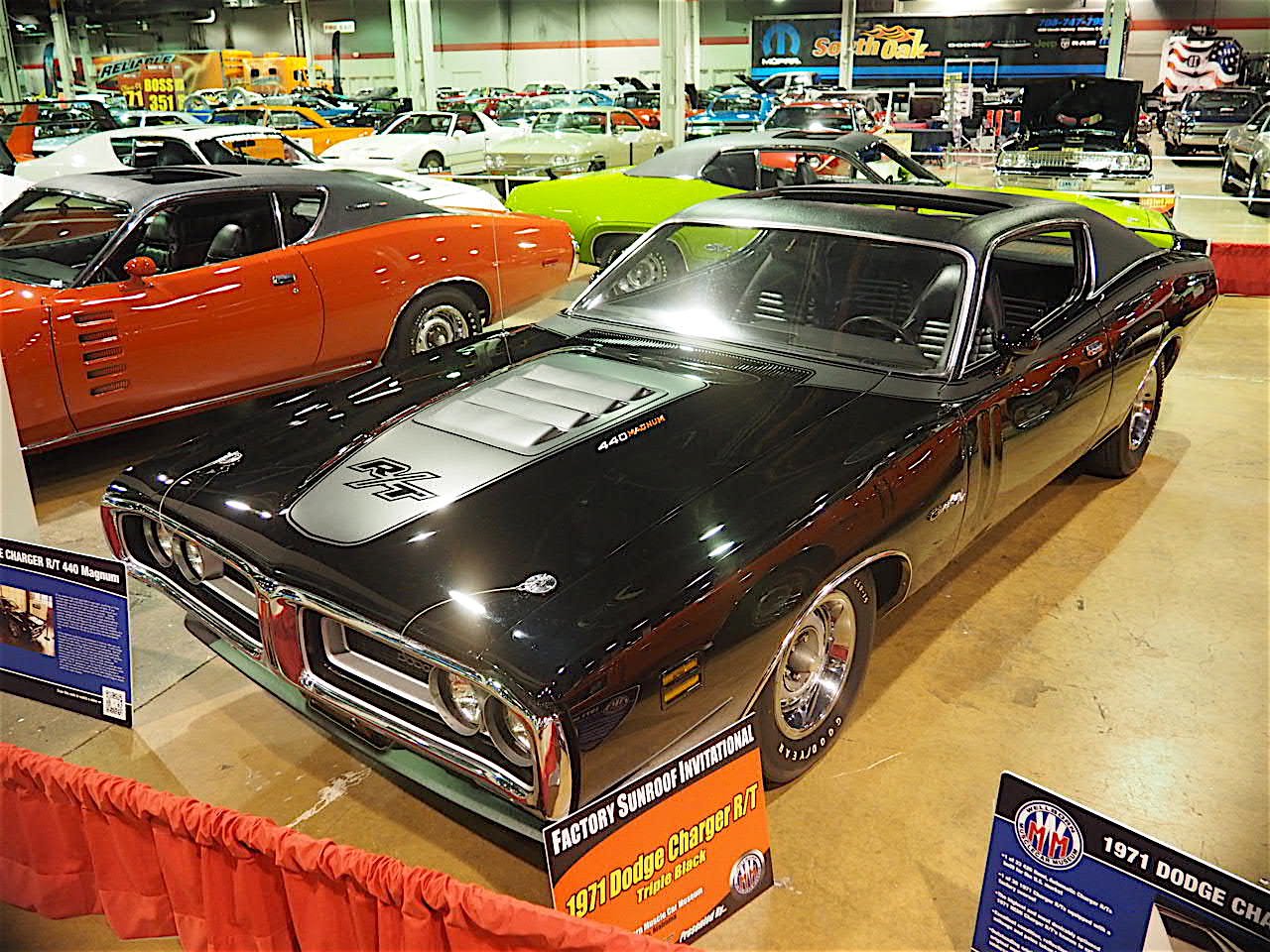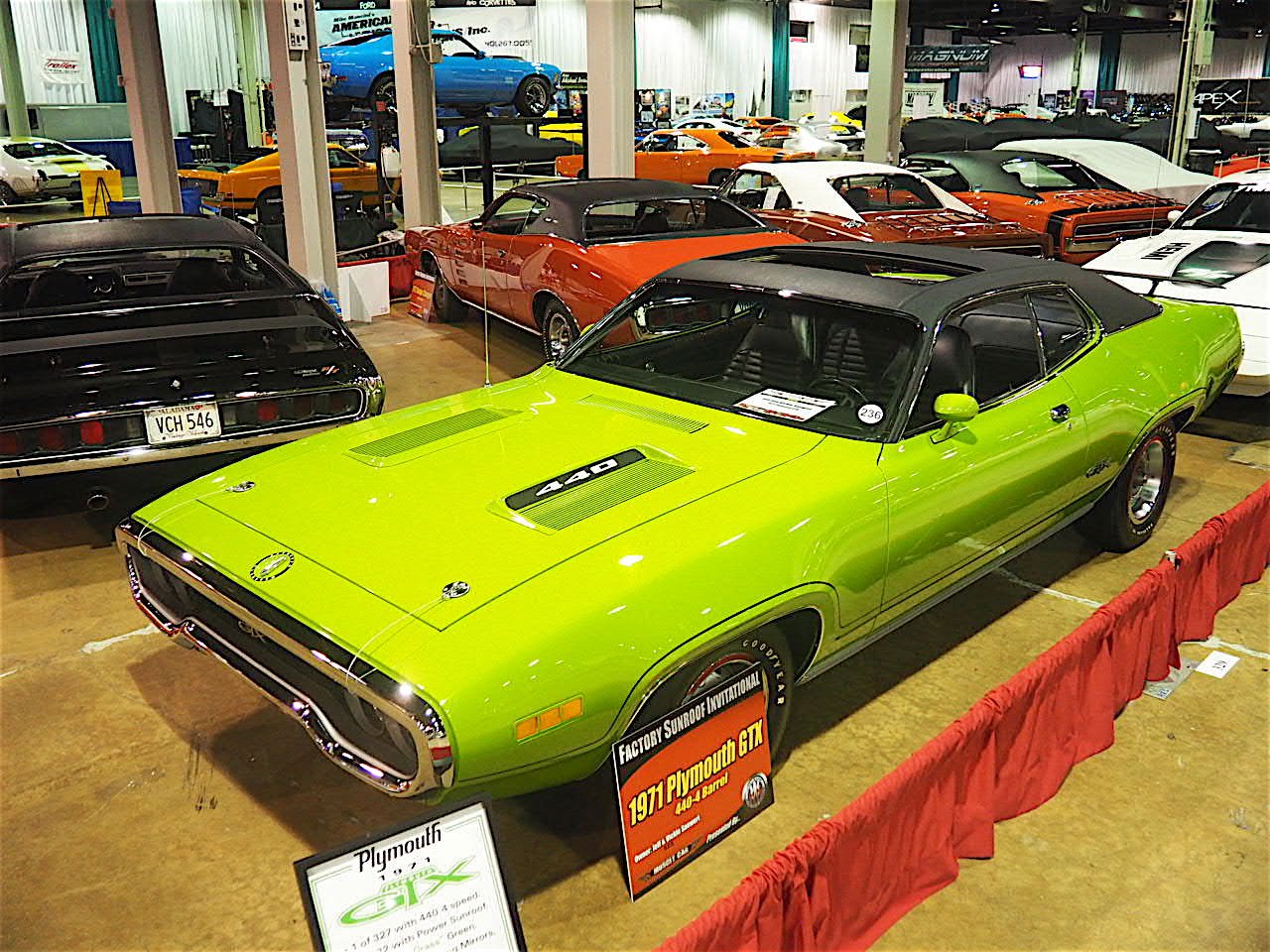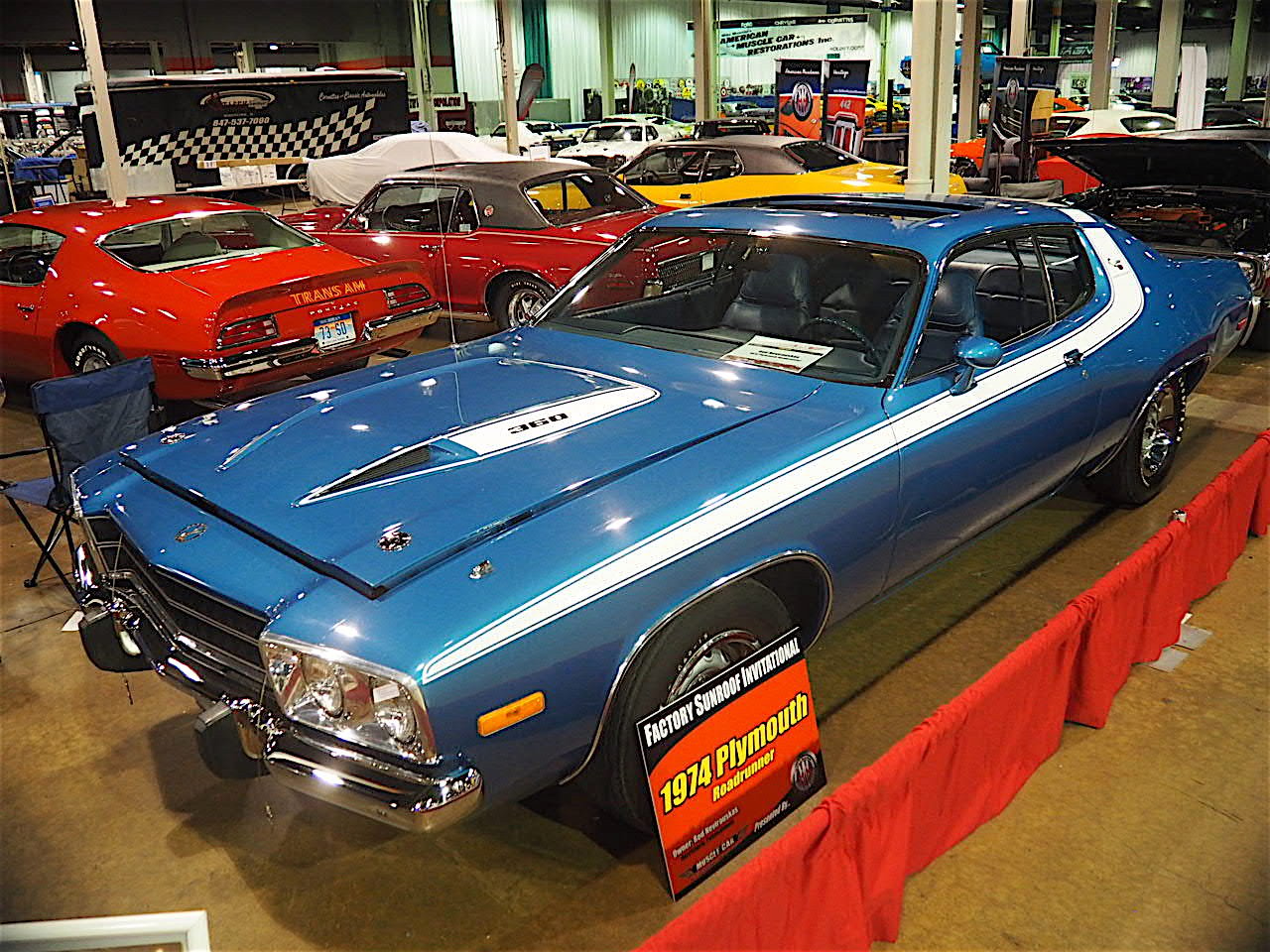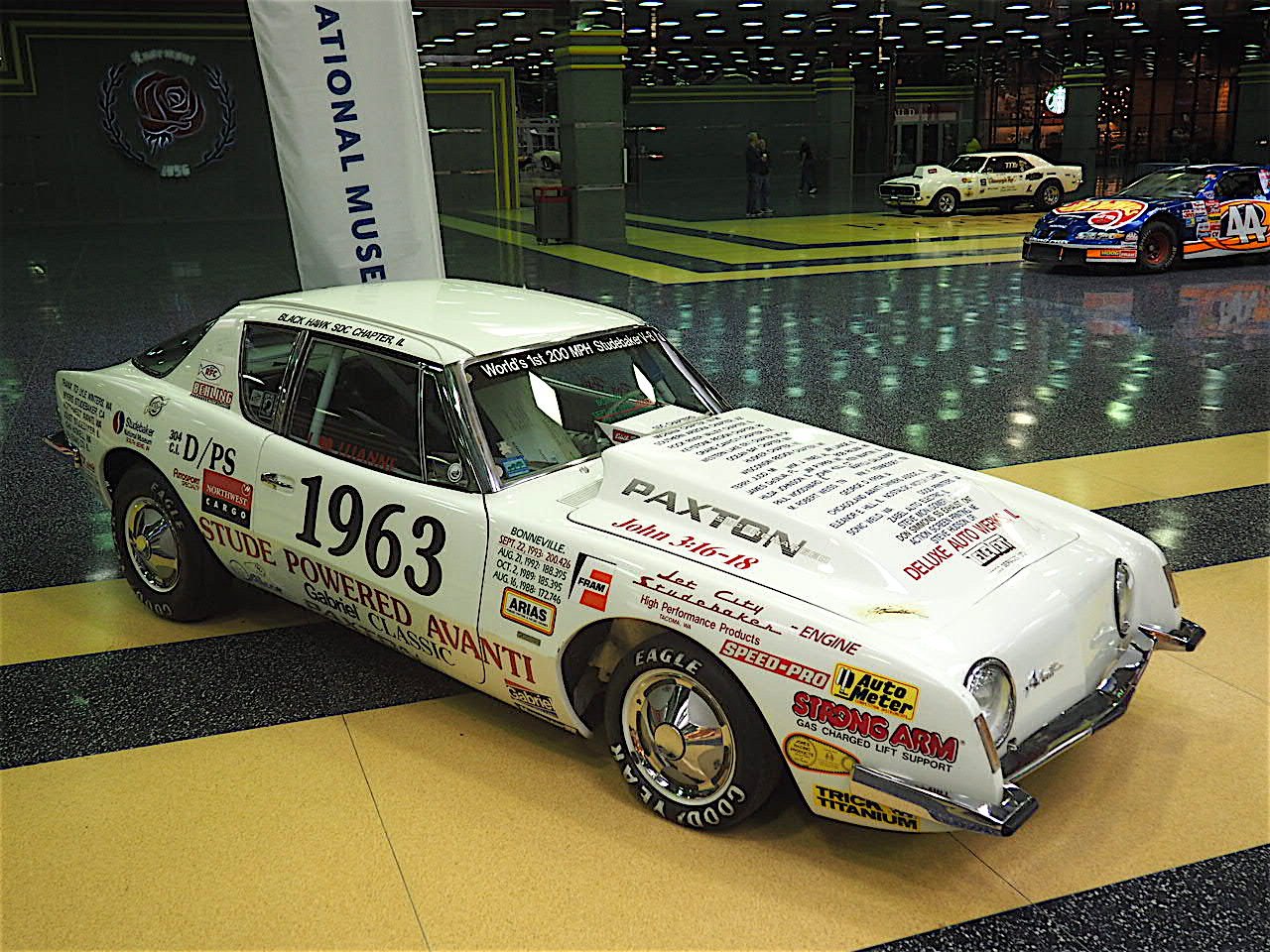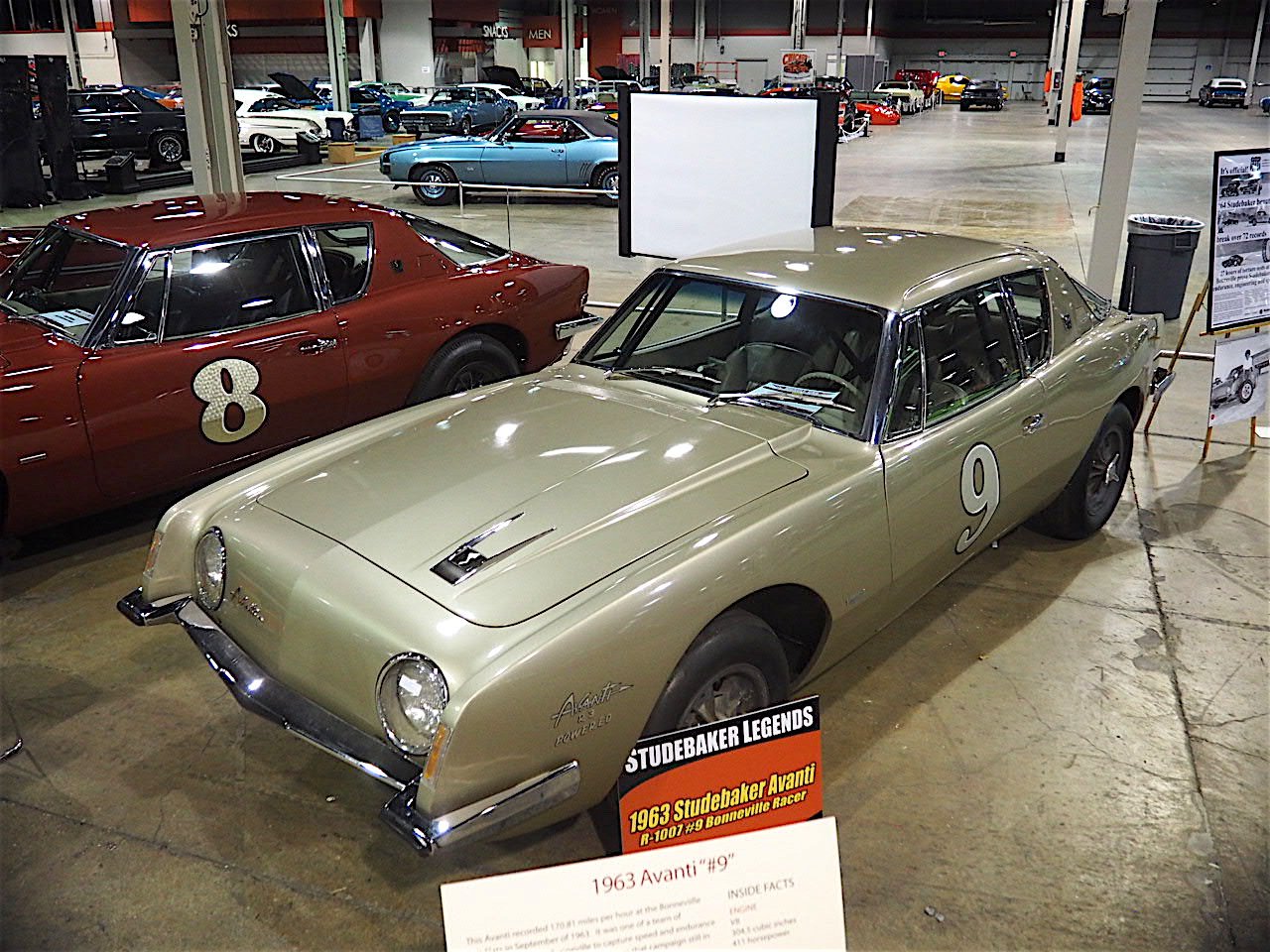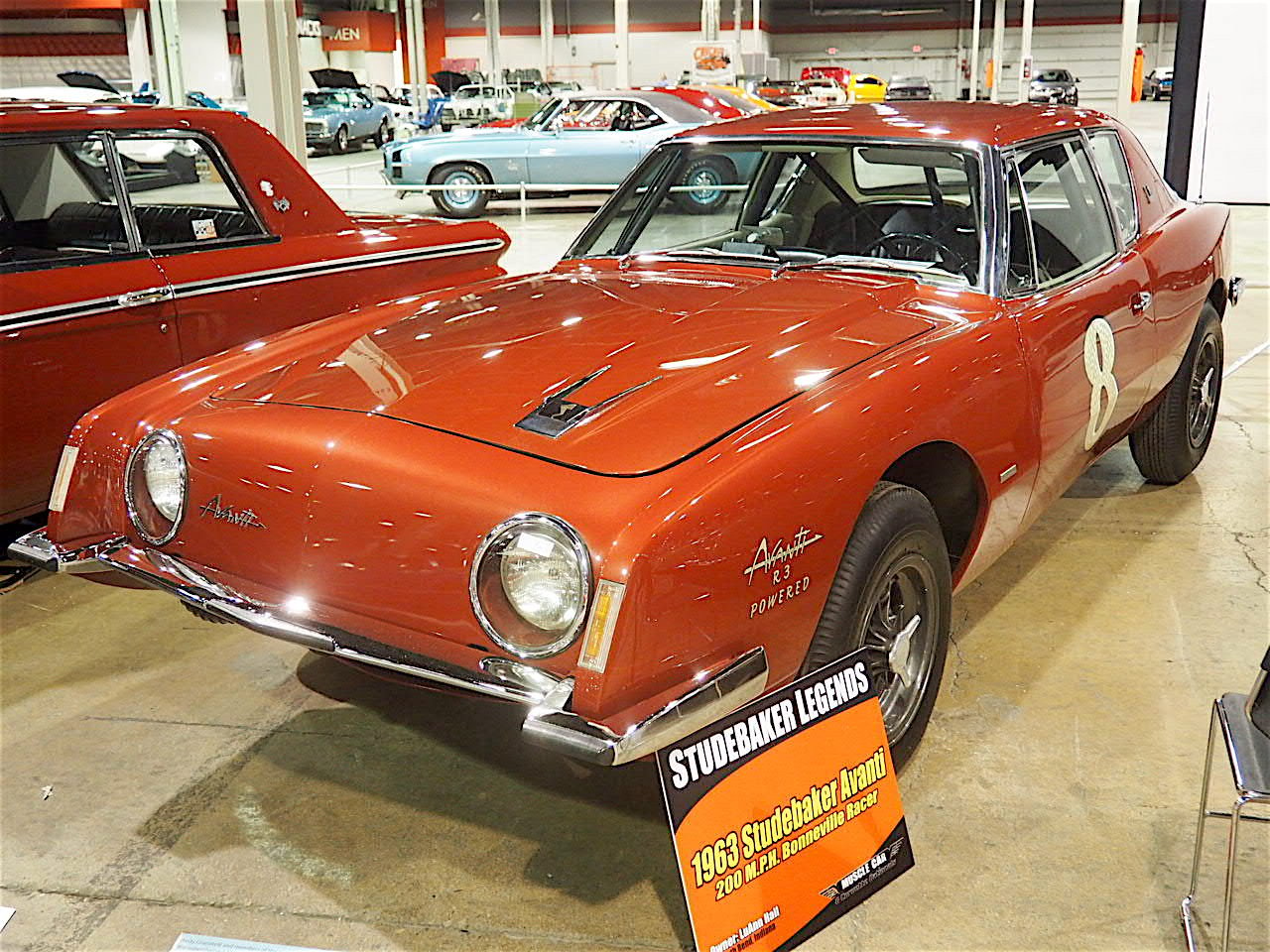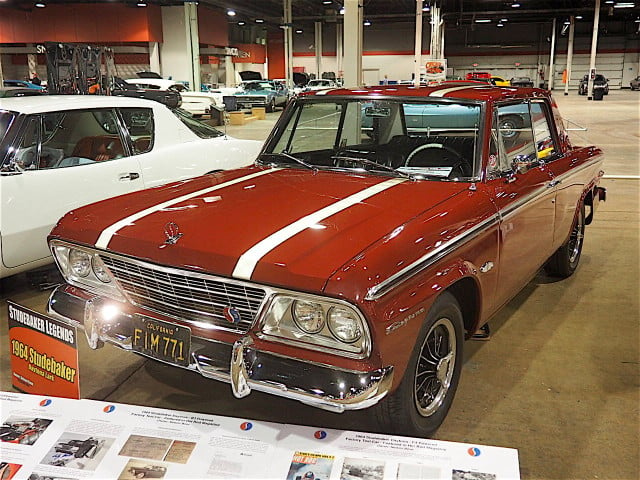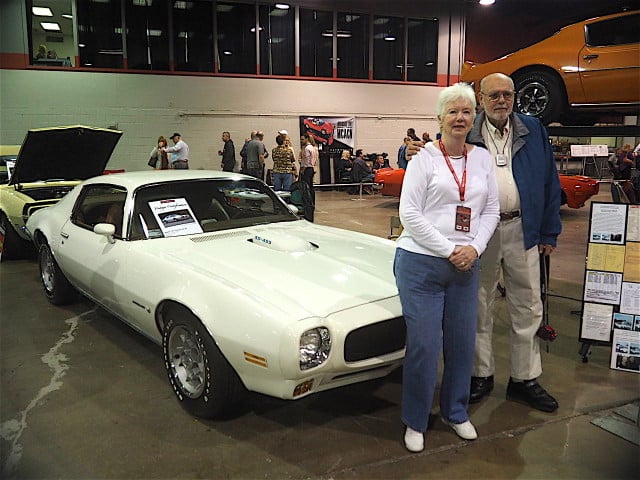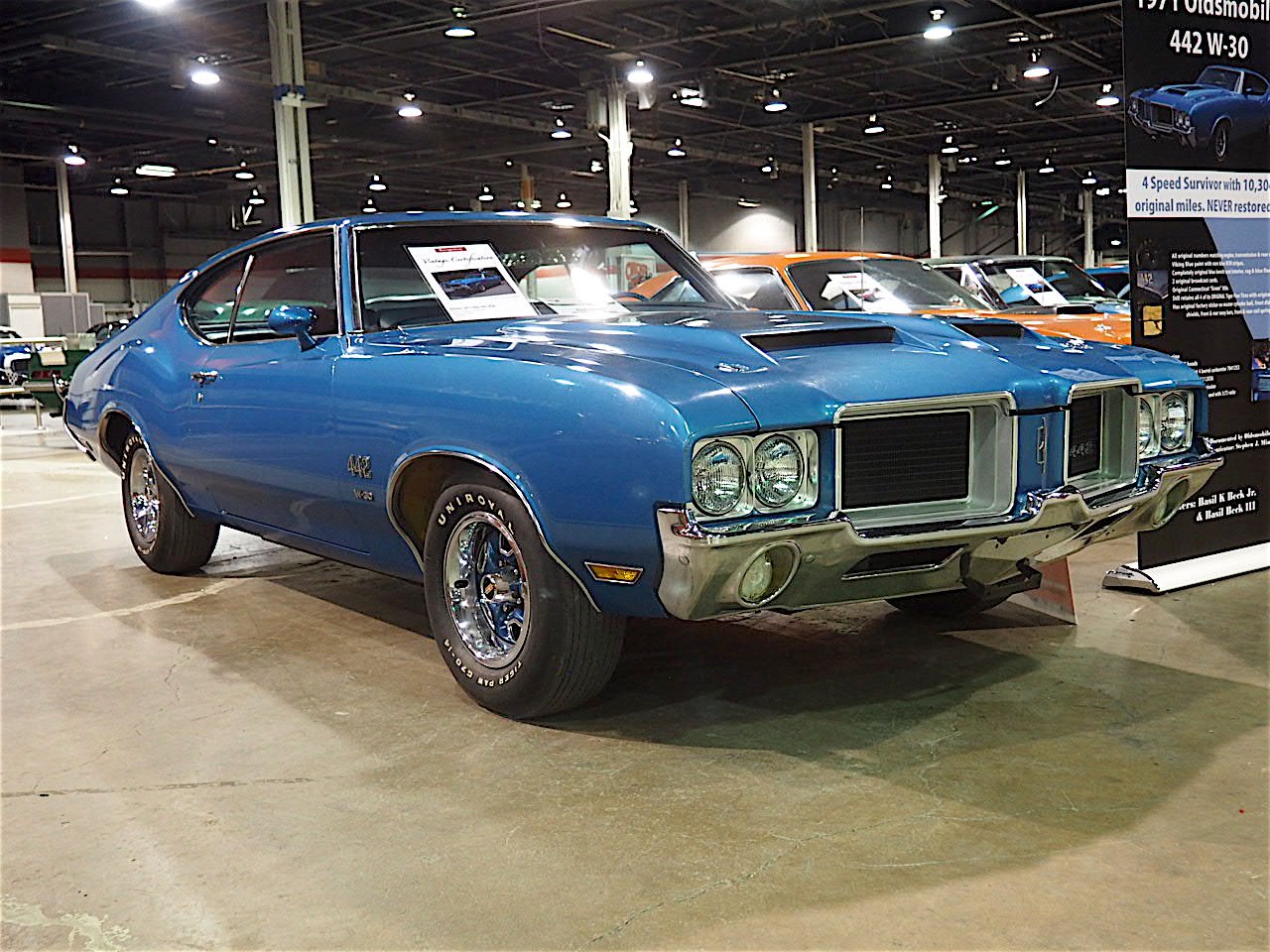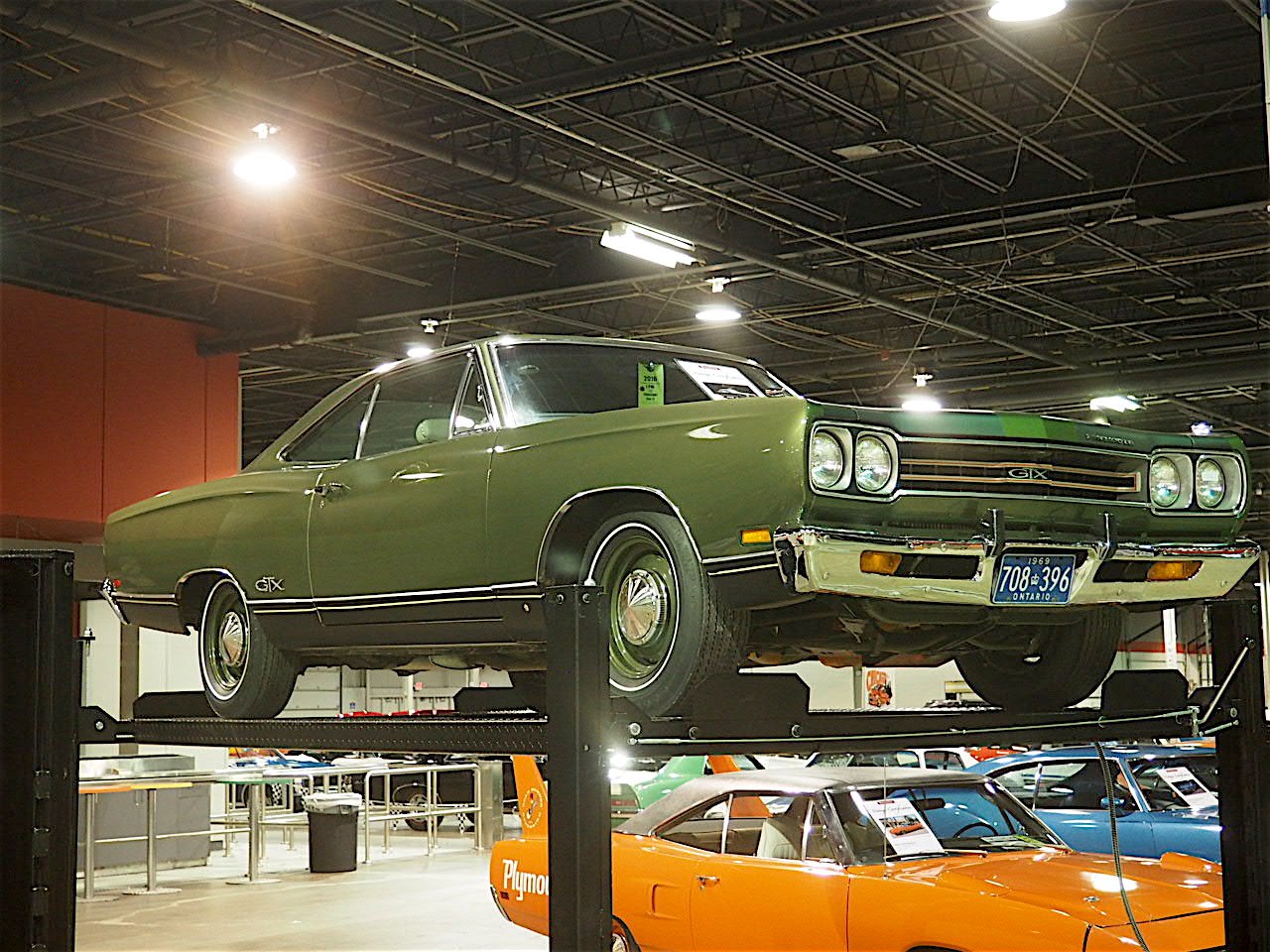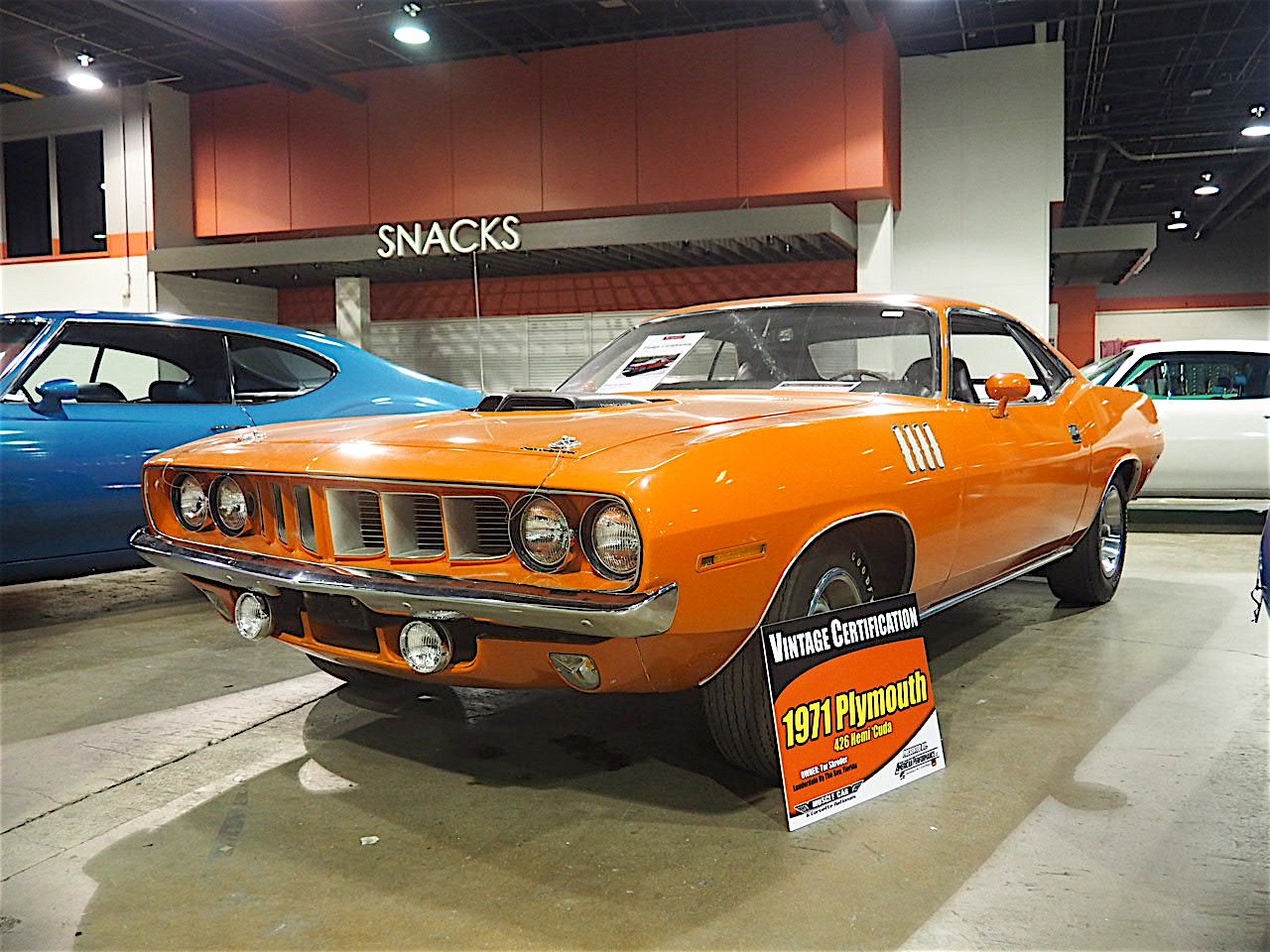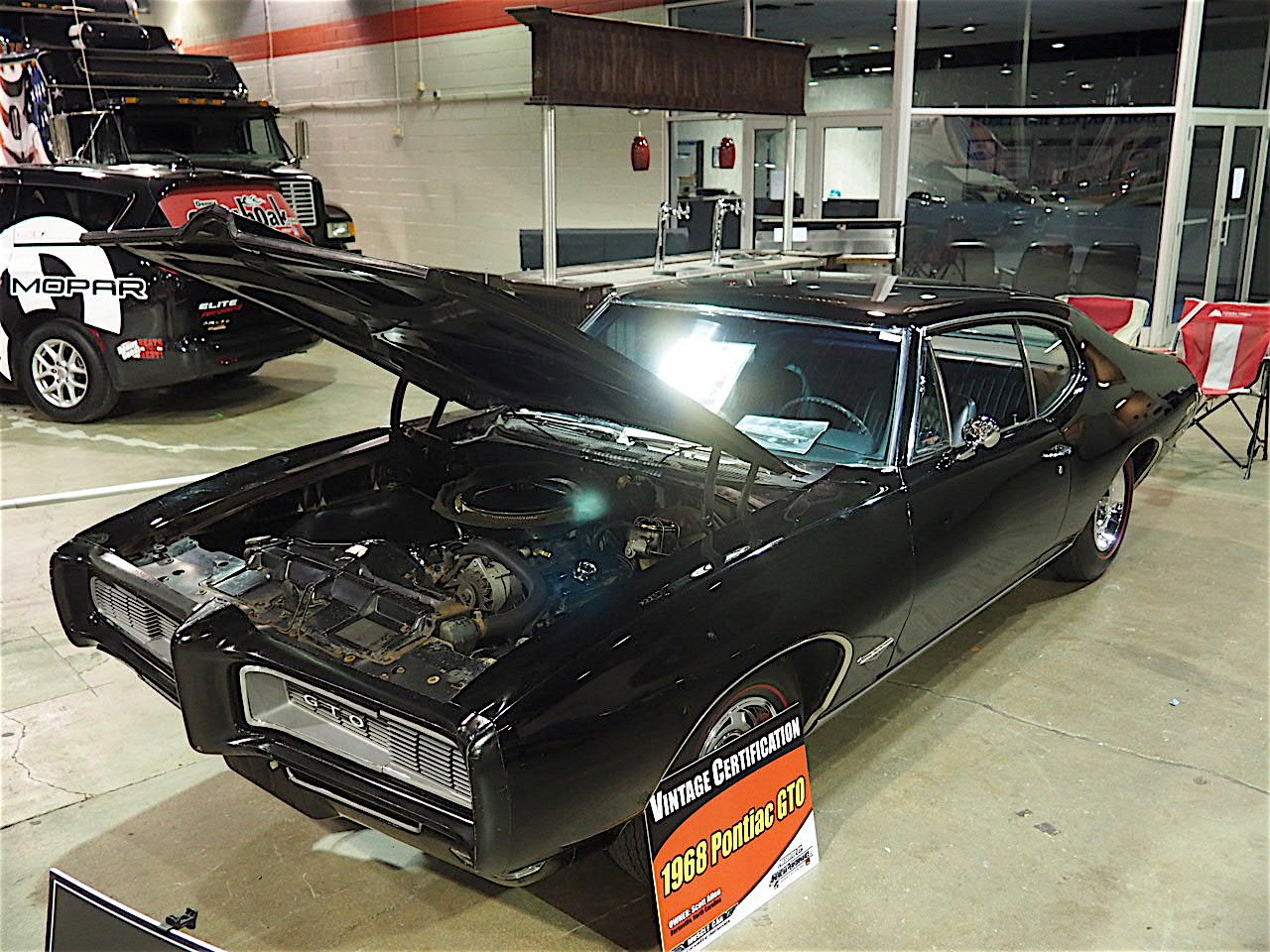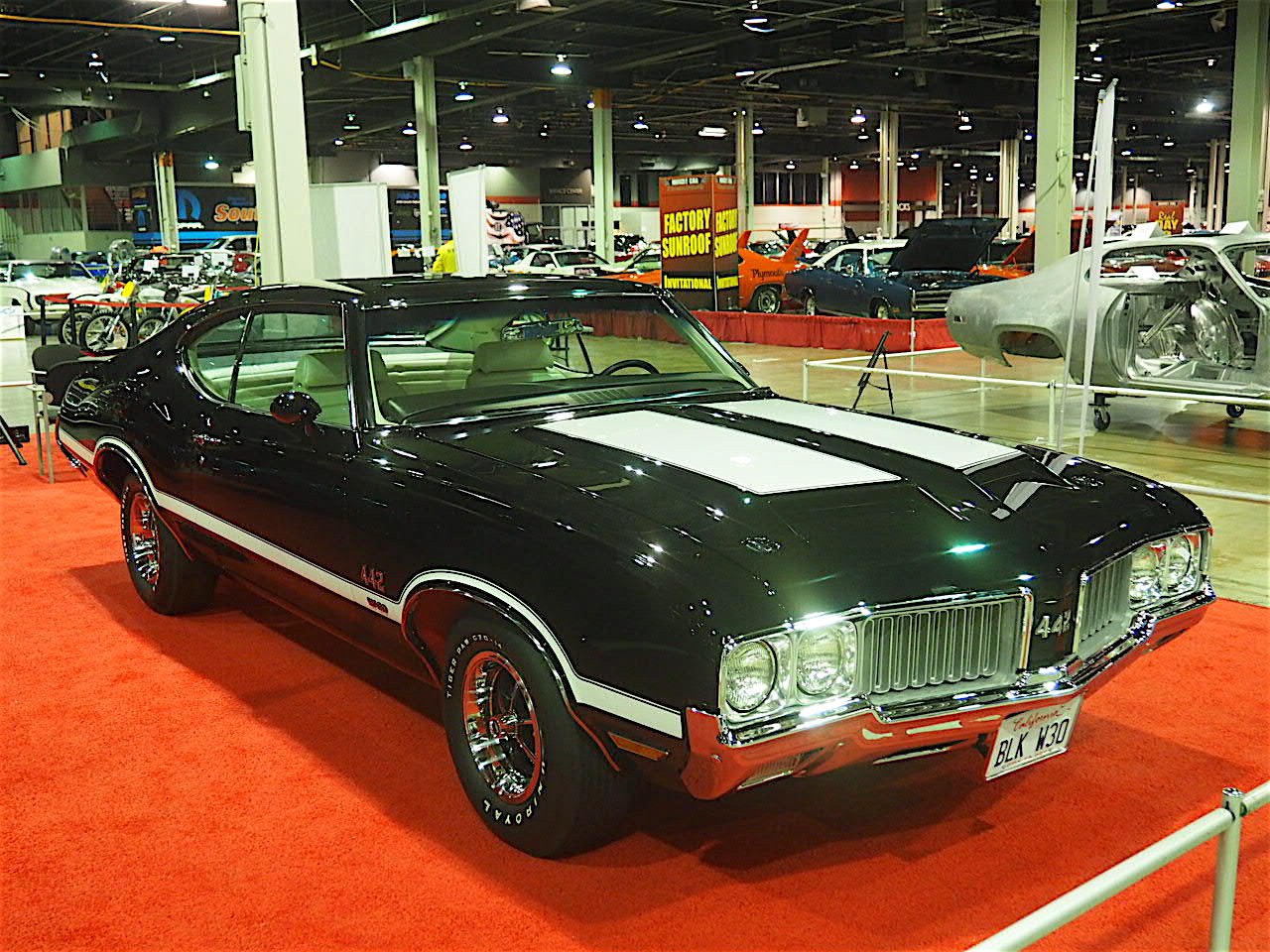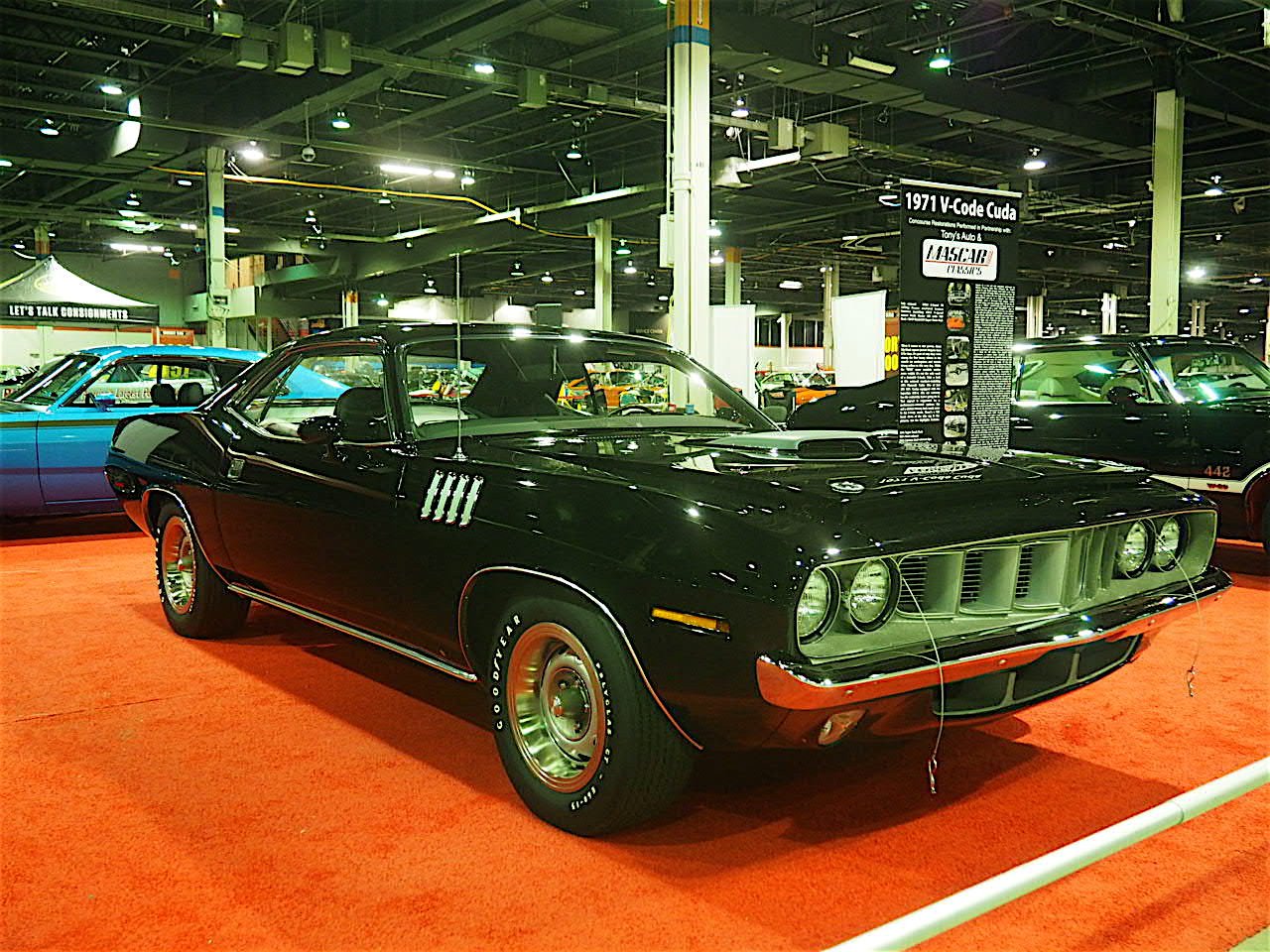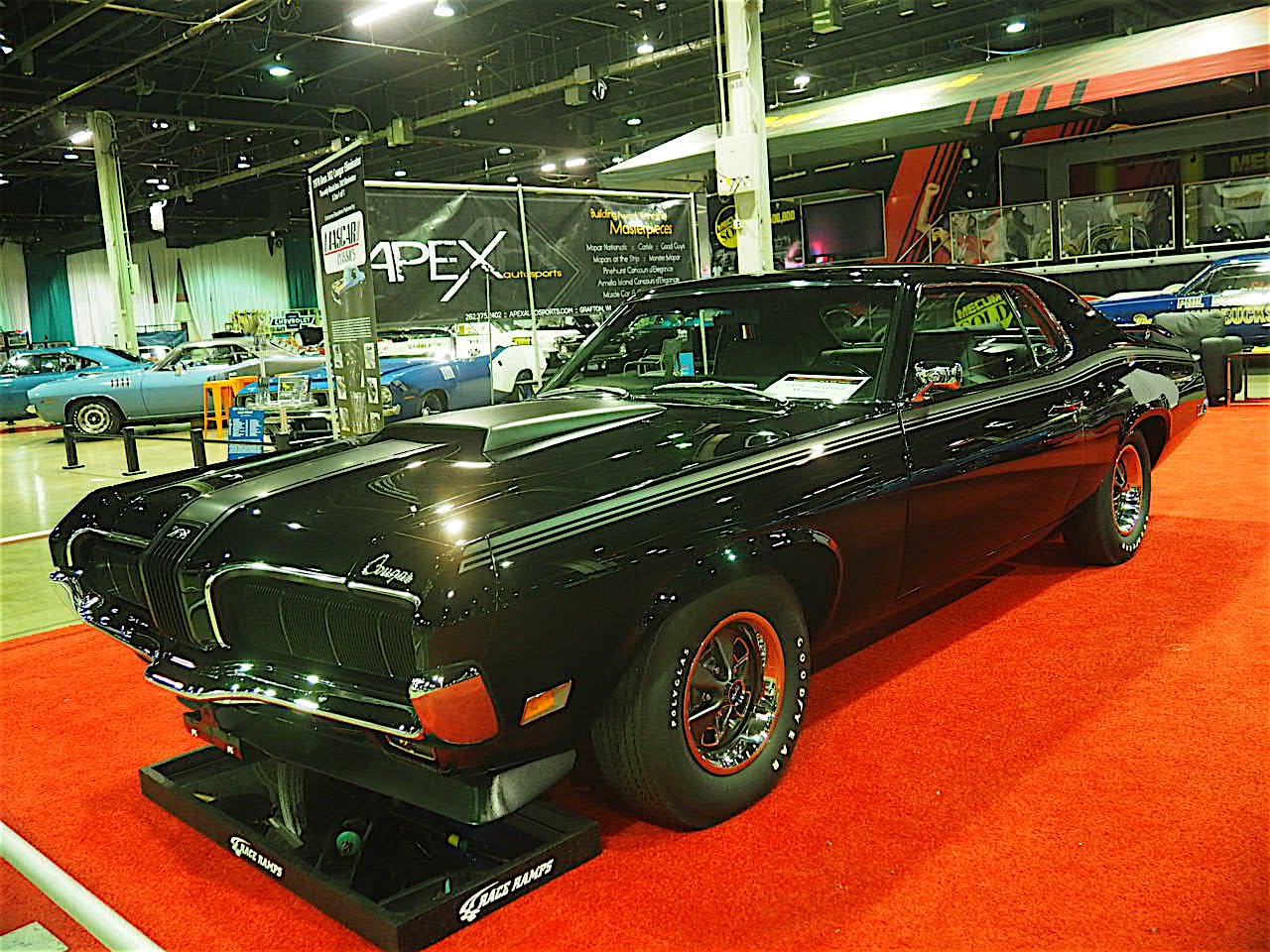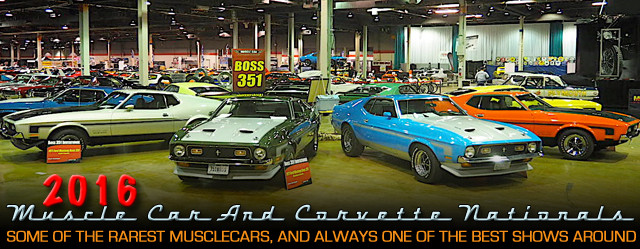 [1]The Muscle Car and Corvette Nationals [2] has been bringing enthusiasts the most awe-inspiring high-performance cars to Chi-Town since 2009. With past highlights like 16 of the 69 ZL1 Camaros and 27 out of the 42 E-body Hemi ragtops built, it would be reasonable to think the show has jumped the shark. Yet for 2016, it was another round of jaw-dropping displays of some of the neatest examples of Detroit iron.
[1]The Muscle Car and Corvette Nationals [2] has been bringing enthusiasts the most awe-inspiring high-performance cars to Chi-Town since 2009. With past highlights like 16 of the 69 ZL1 Camaros and 27 out of the 42 E-body Hemi ragtops built, it would be reasonable to think the show has jumped the shark. Yet for 2016, it was another round of jaw-dropping displays of some of the neatest examples of Detroit iron.
Themes have been the core of “MCACN” since its inception; with the below being highlights from this year’s show on November 19-20, 2016.
Feature Cars
Greeting spectators at the entrance was the Purple People Eater, a 1959 SCCA National Champion racer driven by Jim Jeffords for Nickey Chevrolet. Not only did official sponsor Carlisle Events own this special Vette, but it also has been owned by company founder Chip Miller and Ken Heckert since 1974 – although they had no clue of the car’s pedigree at the time!
Two other feature cars had their premiere at MCACN: a set of ultra-rare Pontiac F-body ragtops owned by Rick Mahoney and restored by Scott Tiemann’s Supercar Specialties. One was the notorious “missing” 8th 1969 Trans Am convertible; the other was a 1968 Ram Air II Firebird 400 convertible.
Shelby Invitational
Carroll Shelby’s biggest competency likely was his ability to pull the best talent together in achieving his goals. For that, MCACN featured a full roster of some of the greatest Shelby Cobras and Mustangs, including Motion Performance’s King Cobra, the sole 1967 GT500 convertible, and a pre-production 1969 GT500 convertible based on a Q-code (non-ram air) Cobra Jet Mustang.
Also worthy of note was one of six GT40 roadsters built, this one being a development and demonstration vehicle for Ford and Shelby.
Corvette Legends Invitational
Since the precursor to MCACN was a Chevy/Corvette show, Vettes always make a splash. And when it comes to Chevrolet’s fiberglass flyer, there’s never a shortage of significant features, including the 1966 L88 development vehicle and #67 Daytona Racer.
Also on display was the small-block from the 1960 CERV 1 (Chevrolet Engineering Research Vehicle), which featured heavy use of aluminum and magnesium, fuel injection, and twin-turbos.
Class Of 1966 Invitational
It’s been 50 years since the performance-car market got its game on: Chevrolet introduced a regular-production Chevelle SS 396 after previewing the Z16 the year before, and Chrysler debuted the Street Hemi (although a performance car with image was still a year away). But it was the GTO’s resounding 96,946 in sales that showed that 1966 was the pivot from what was to what would be. This one was special-ordered in a Cadillac color.
Surrounded by the usual suspects is this 427-powered Caprice with 4-speed.
Class Of 1971 Invitational
Likewise, it’s been 45 years since the official decline of the muscle car era. For GM, all vehicles featured lowered compression, but both Ford and Chrysler kept on plugging away, with the Hemi making its final, glorious appearance. Plenty of ‘Cudas on hand, but the more unusual included a Challenger R/T with a retina-burning orange stripe and GTO 455 HO with the optional D98 stripes – compare the stripes with the pair of GTO Judge convertibles.
BOSS 351 Invitational
After two years of Boss 302s and 429s, Ford made an about-face and introduced the 330-horse 1971 Mustang Boss 351. Only 1,806 were built, and the Invitational featured a selection in several colors, including one in special-order Calypso Coral.
Real Day2 Invitational
It’s one thing to find a neat car, but it’s another thing to find one with vintage aftermarket equipment. MCACN had several on display, from dealer-prepped cars like Yenko to authentic street bruisers complete with classic paint jobs. This is the way it used to be, folks!
Pure Stock Drags Display
The other best muscle car event in the U.S. is the Pure Stock Muscle Car Drag Race, which features approximately 130 cars showing up at Mid-Michigan Motorplex every September. The cars run the gamut, from a supercharged 1957 Ford to a 1968 Hurst/Olds, a 1967 Hemi Coronet R/T (in the hands of its original owner), and a 1968 AMX, among others.
Torino/Fairlane/Cyclone Invitational
Aside from Mustangs, FoMoCo products haven’t received their due at past MCACN events, but all was forgotten thanks to this display. Led by a pair of 1966-67 Fairlane GTs, the stand-out was Bobby Unser’s Pikes Peak 1969 Torino replete with a Smokey Yunick-built Boss 429.
Mercury wasn’t left out, with several 1969 Cyclones and a 429-powered 1970 Cyclone GT. However, by far the neatest was a black 1969 Montego MX with a 428 CJ.
Aero-nosed 1969 Cyclone Spoiler II (painted in non-stock black) has experience at Bonneville.
Barn Finds & Hidden Gems
The Automotive Archeologist is renowned for discovering hidden treasures, and for several years he has assembled a display of barn finds at MCACN that is perhaps the most popular theme at MCACN. Notables this year included a 1969 Charger 500 homologation special, a 1966 GTO funny car with injected 389, a 1964 Chrysler 300 (not a 300-K) with a 413 and 4-speed, and a turbo-powered 1962 Oldsmobile Jetfire complete with engine display.
Factory Sunroof Invitational
Sunroofs were an expensive option available (albeit outsourced) for some muscle cars starting in 1968 with the Cougar XR7-G. As convertibles began to fall out of favor in the next decade, the sunroof became a viable solution. Alas, they were very expensive and, hence, they tended to be quite rare. This display featured the Cougar along with Buick Sun Coupes, Dodge Challenger and Chargers, and Plymouth Road Runner and GTX.
Studebaker Legends
When Studebaker was struggling in the early 1960s, it developed an 11th-hour halo car (the Avanti) and Jet Thrust engines (R1 through R3), then hit Bonneville and set record after record. The Avanti in the convention center lobby was an authentic 200-mph record-holder, while Avanti #9 at the display was converted by Paxton to R3 status to become “the world’s fastest production automobile” in October 1963 at Bonneville. Yet would you believe there was a third Bonneville Speed Trial car? Avanti #8 made its debut after a complete restoration.
But it wasn’t just Avantis in the display – a special R2 1964 Daytona was the very same one road-tested by Hot Rod, achieving 150 mph at Bonneville.
Vintage Certification
The Vintage Certification program puts the spotlight on preservation instead of restoration. There are five preservation levels, from unrestored in at least one vintage reference area to 95% unrestored in all reference areas: Vintage Reference, Vintage Legacy, Vintage Heritage, Vintage Legend, and Vintage Time Capsule. Of special note was Enrico and Lenora Stein, the original owners of Steve Segal’s 1973 Super Duty Firebird Formula 455, who hadn’t seen their Poncho in 30 years.
The 1971 Olds 4-4-2 W30 had 10,000 miles and, if you look closely, you'll notice subtle blue stripes.
MASCAR
While not a proper theme like the above, Orange County-based MASCAR [51] debuted a trio of black cars, all of which have recently emerged from restoration. The 1970 Olds 4-4-2 W30 included the awesome aluminum W27 rear axle carrier, while the 1971 ‘Cuda 440+6 is simply one of the most desirable muscle cars of the era. However, the 1970 Cougar Eliminator stood out because black was not a regular production color for the Eliminator package, plus black stripes were the only ones available. Three black Eliminators are known to have been built, but this is the only one with the Boss 302!
Scan the below gallery to see many other vehicles plus the aforementioned from the 2016 MCACN.
